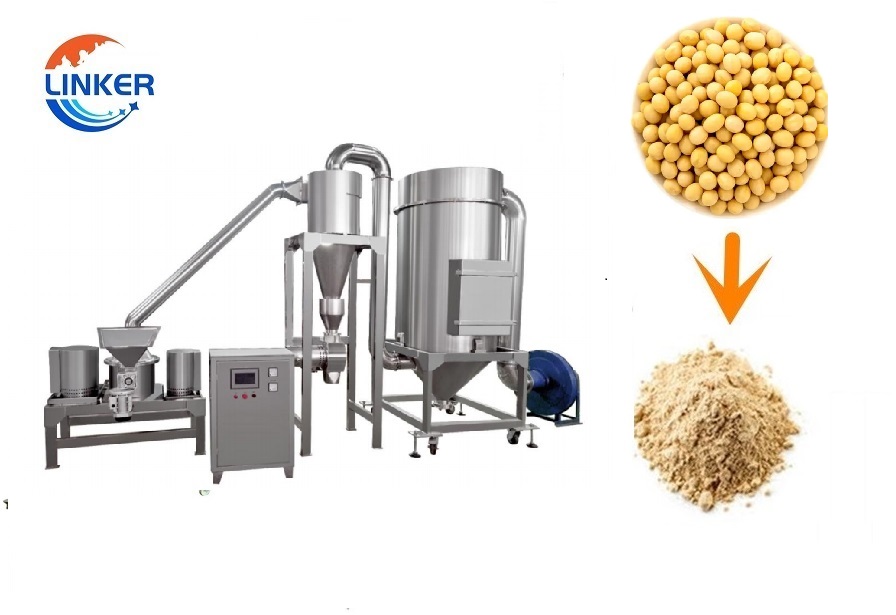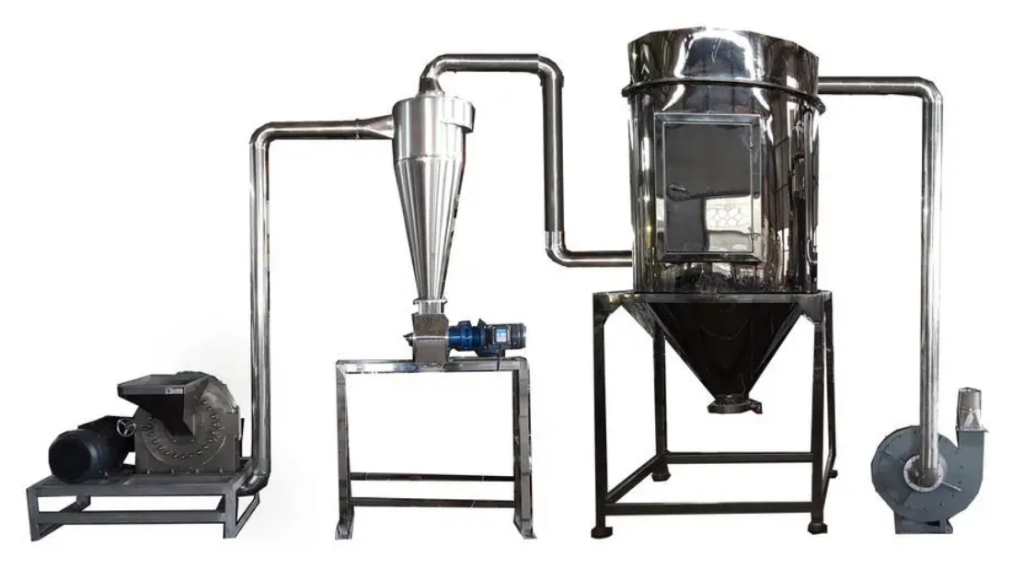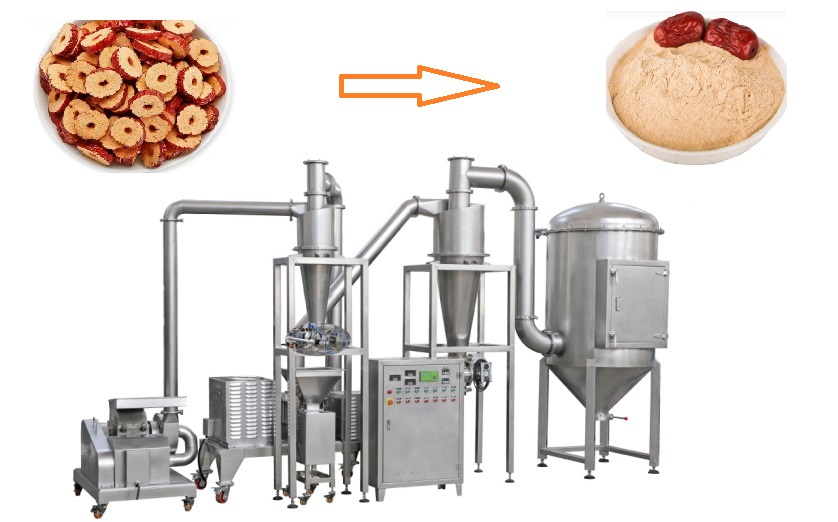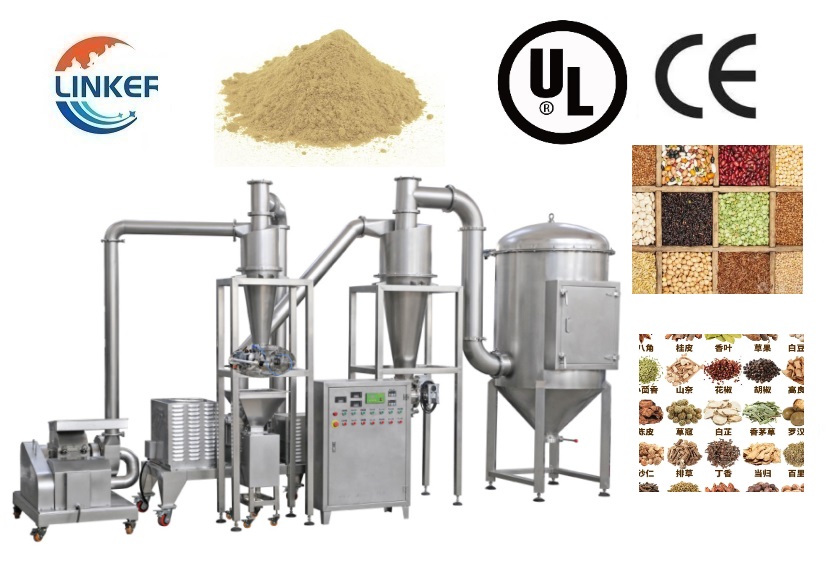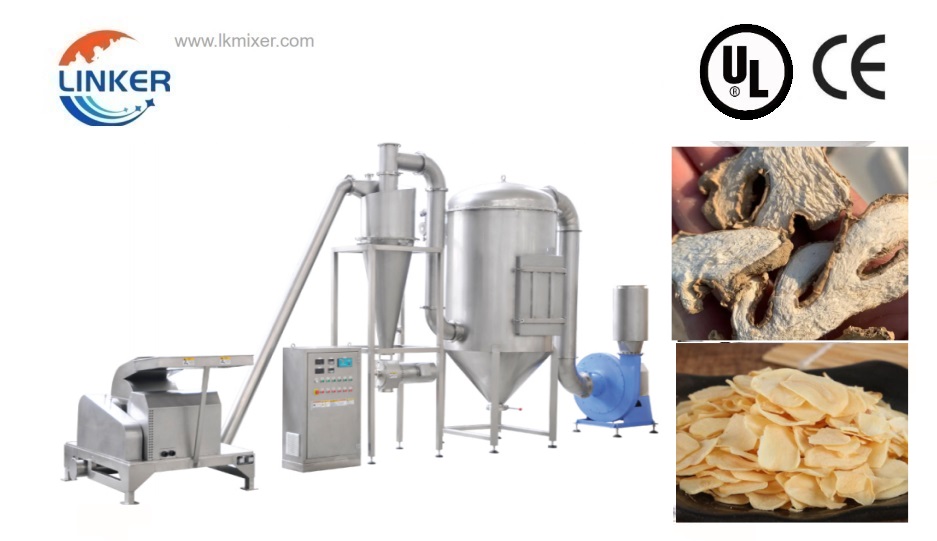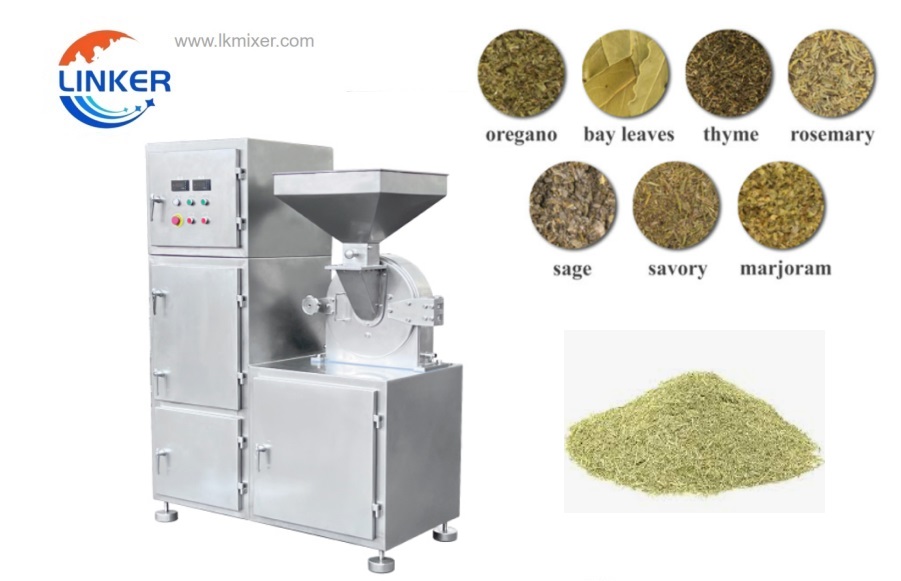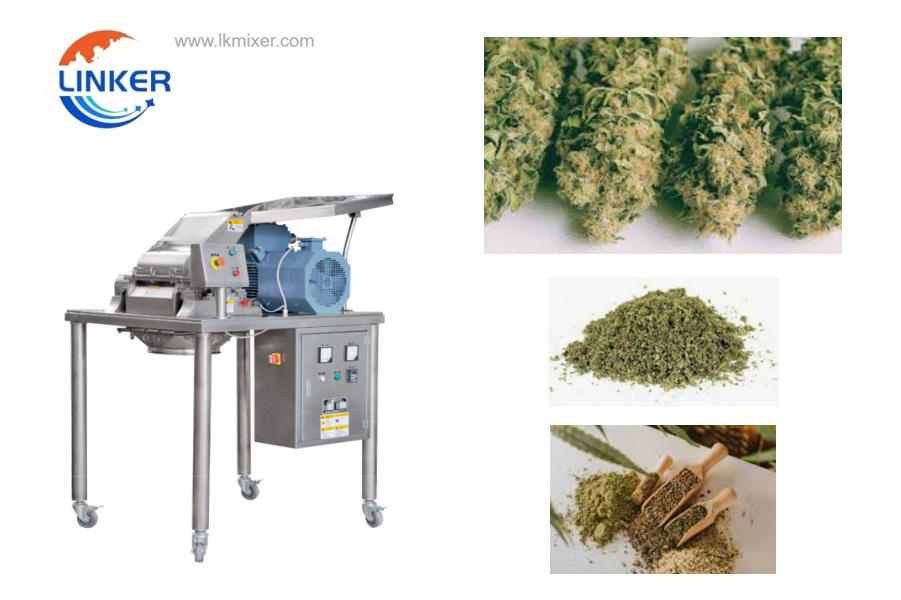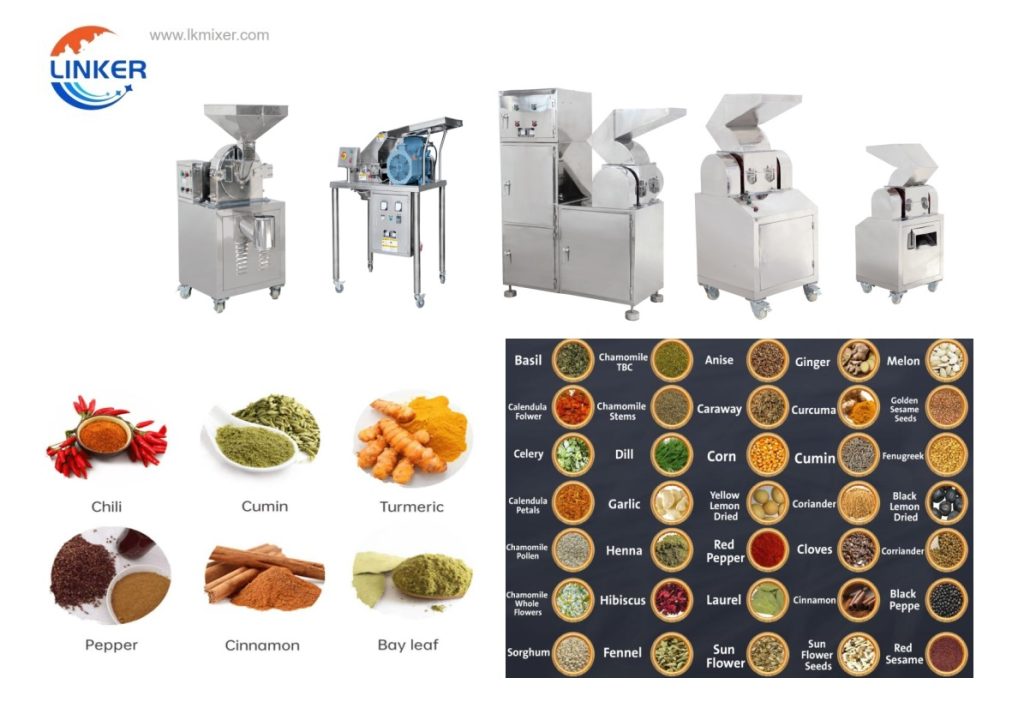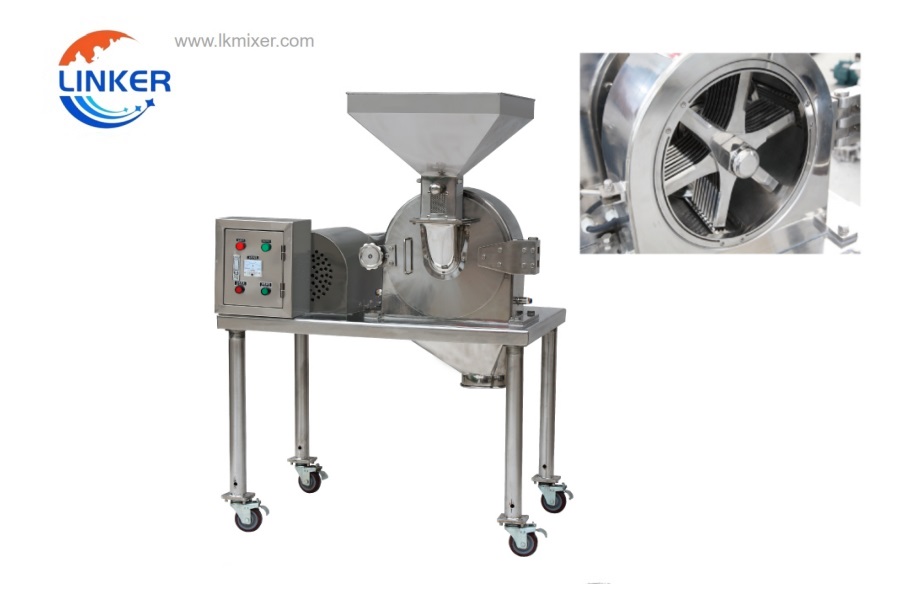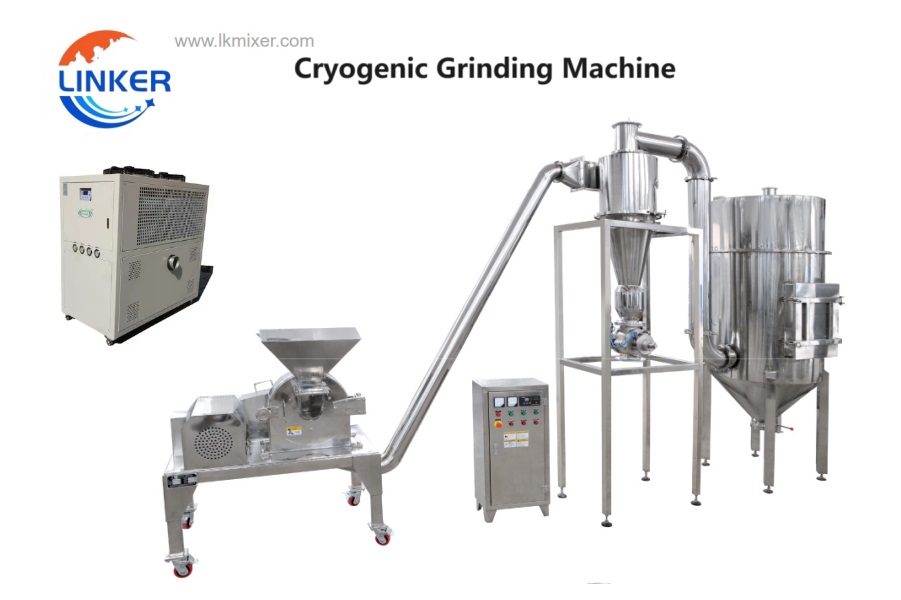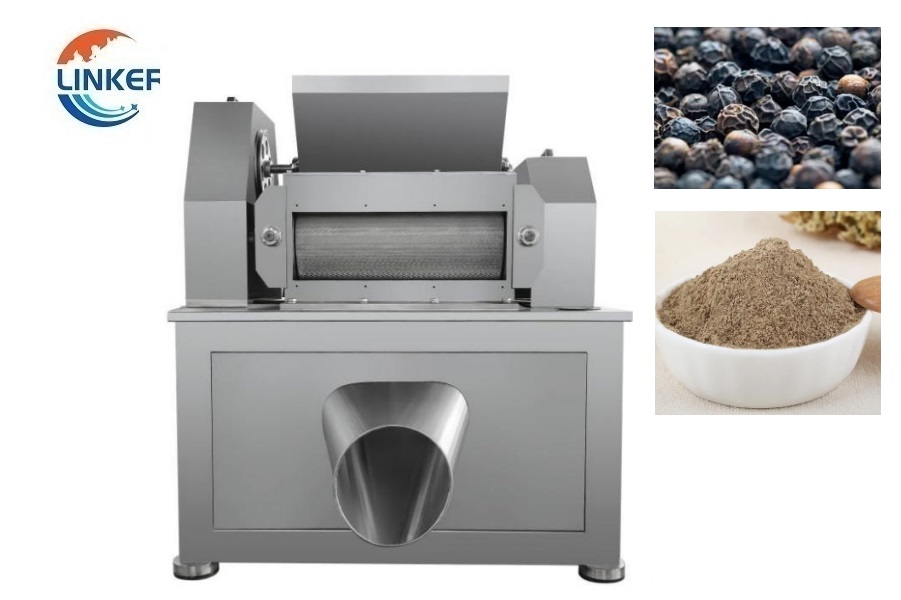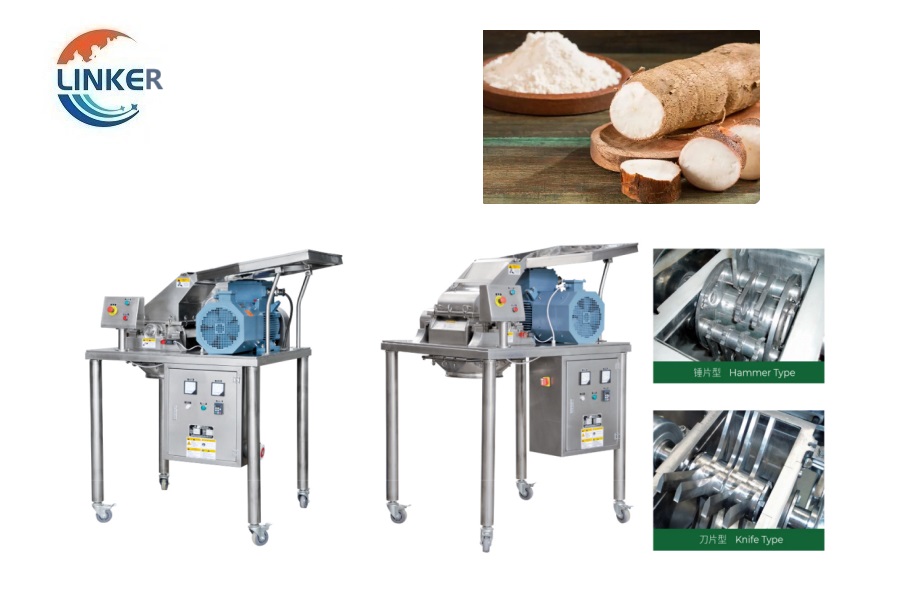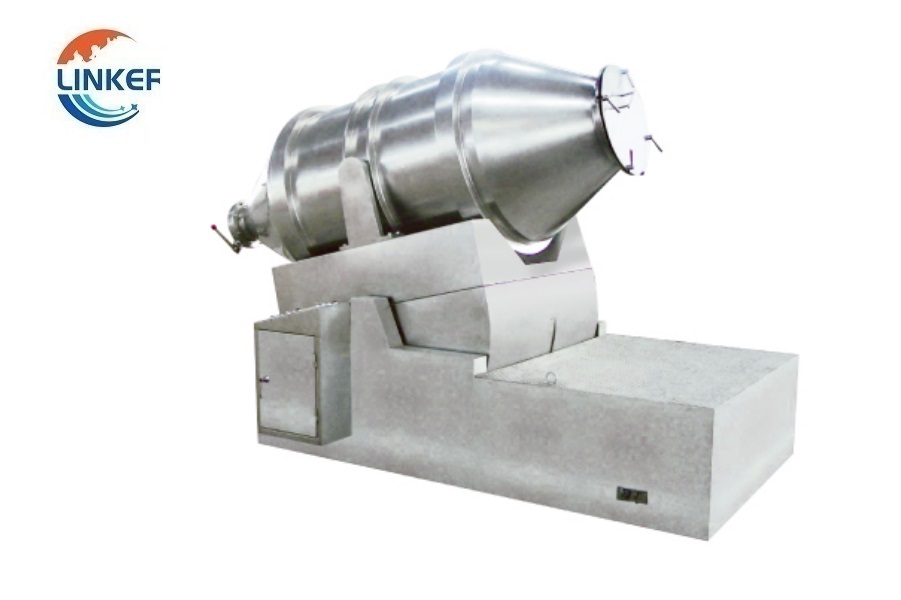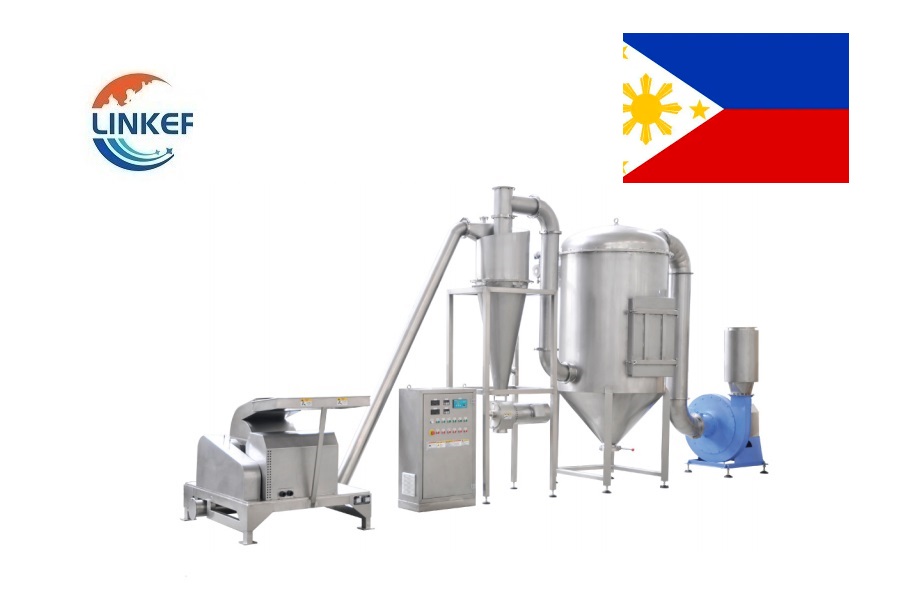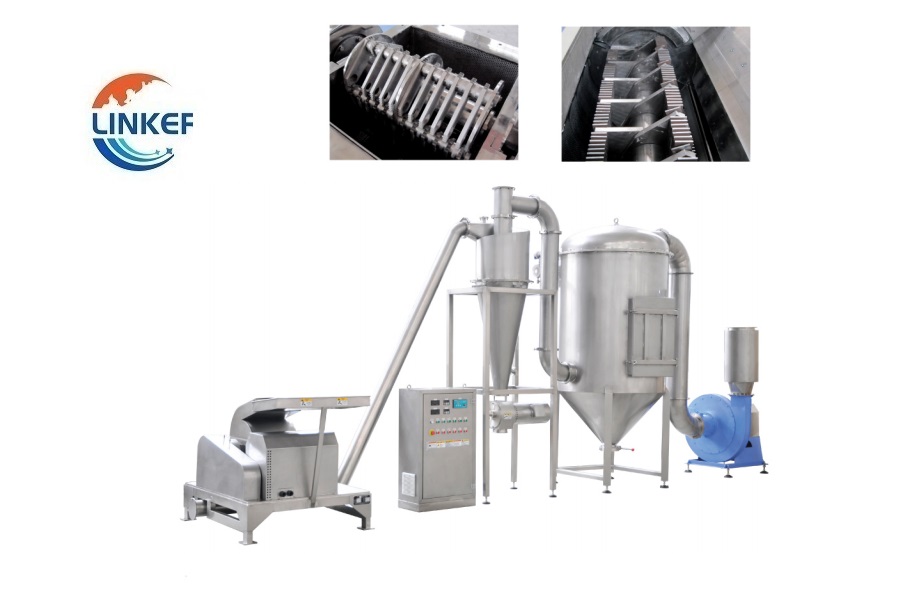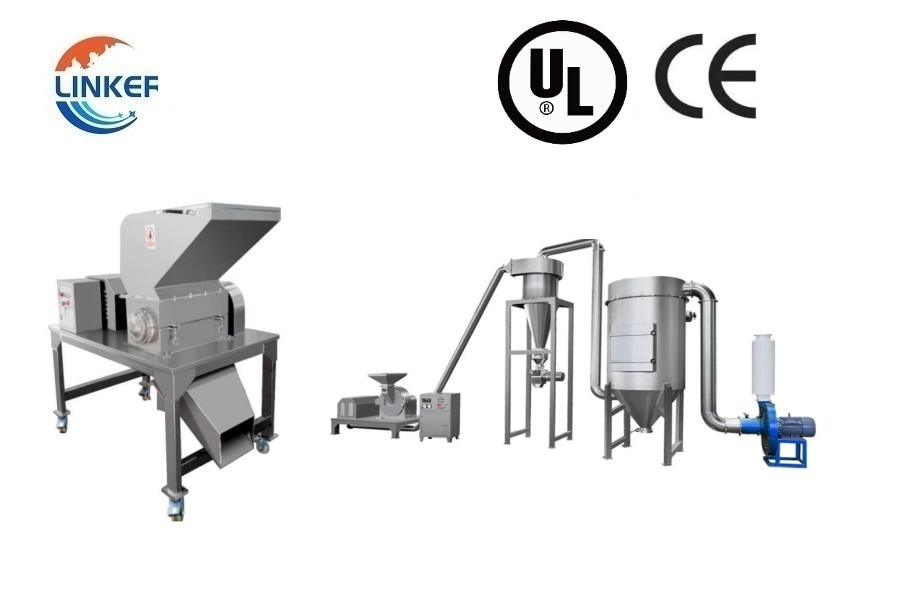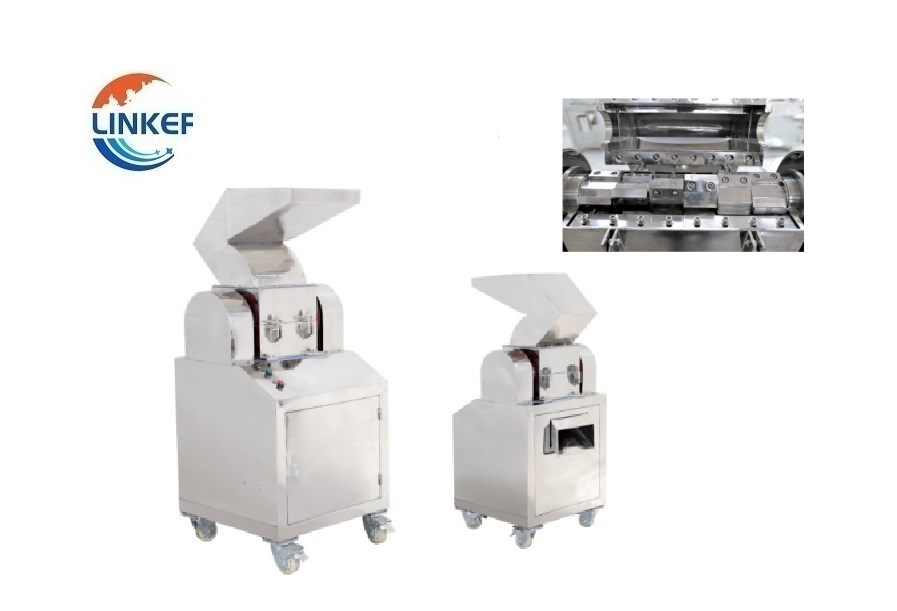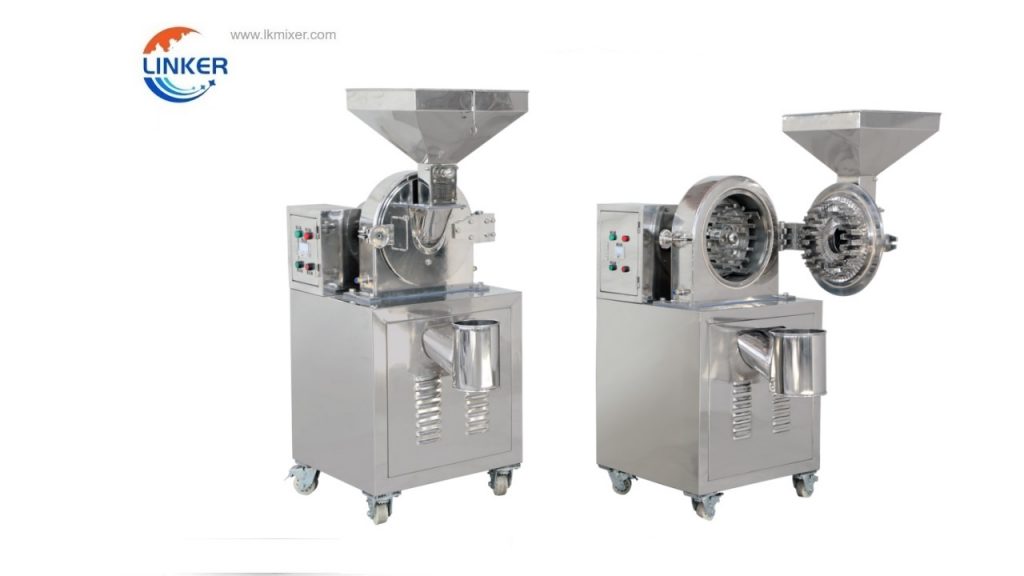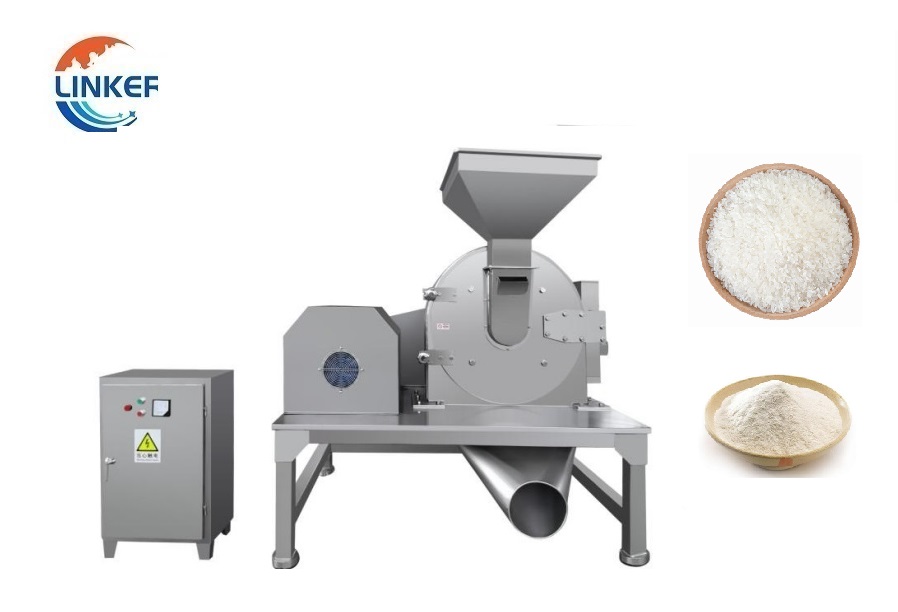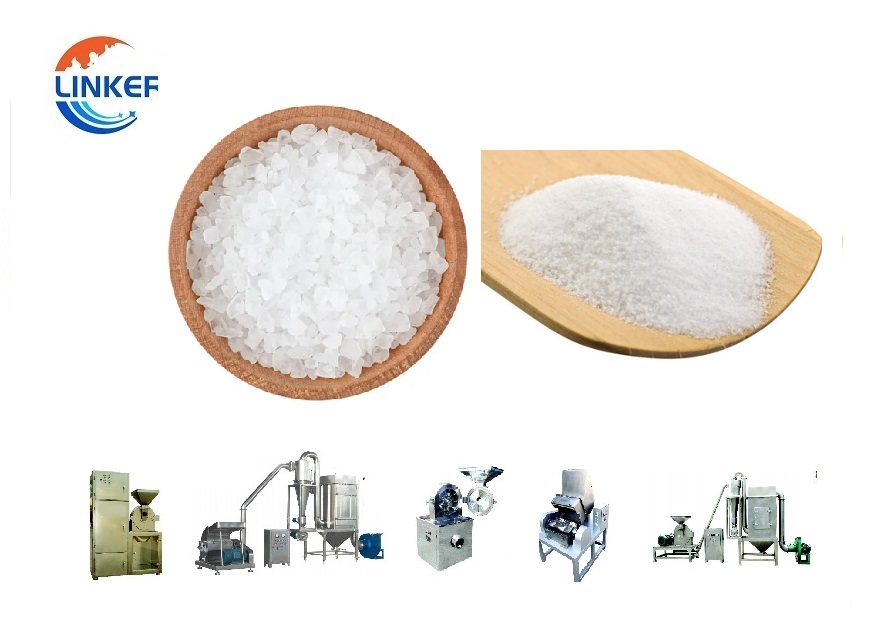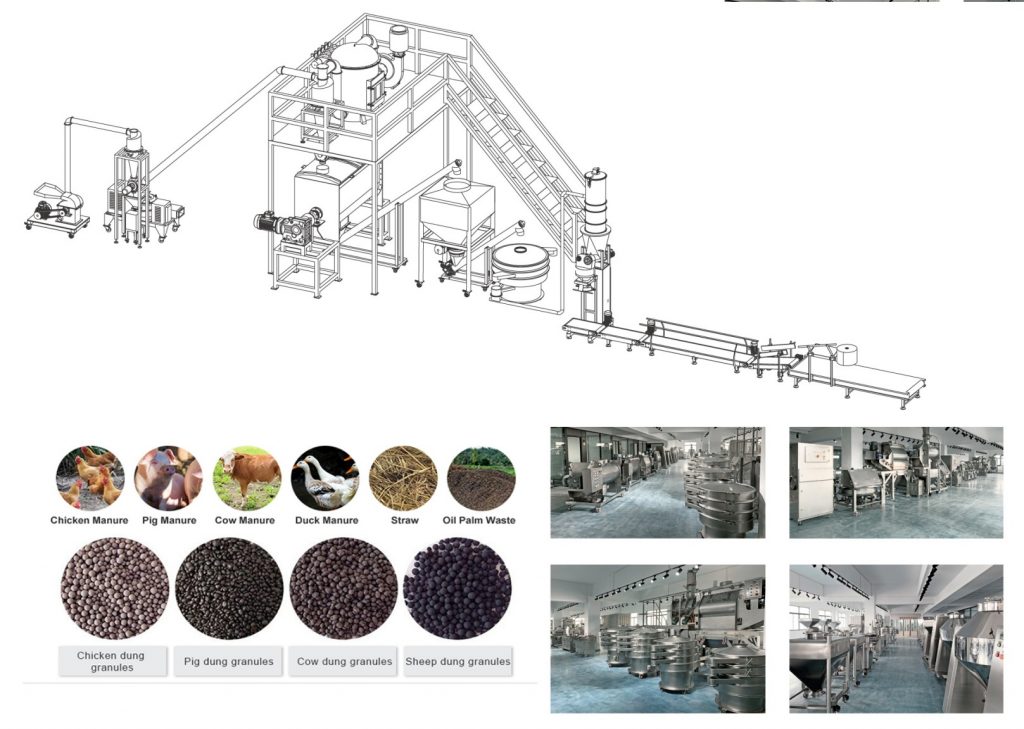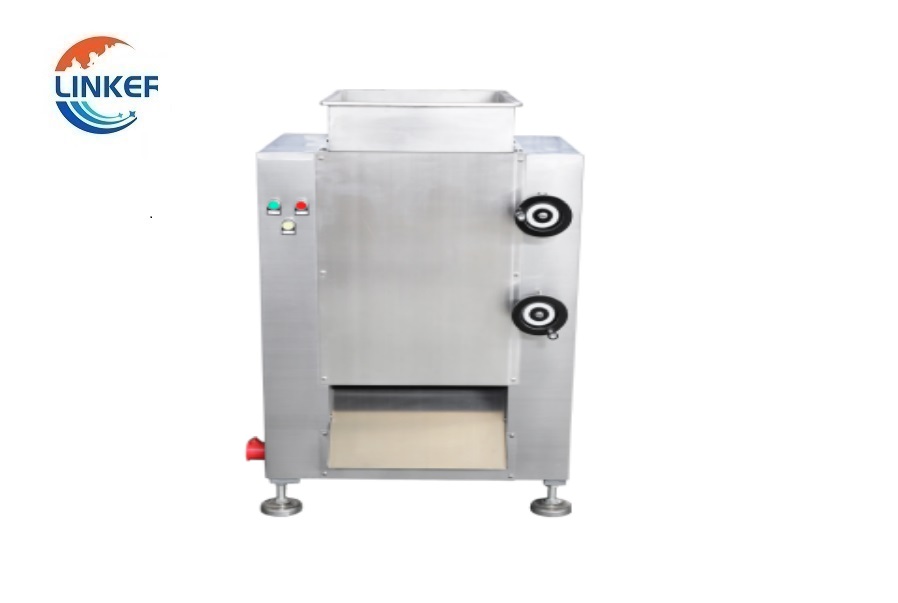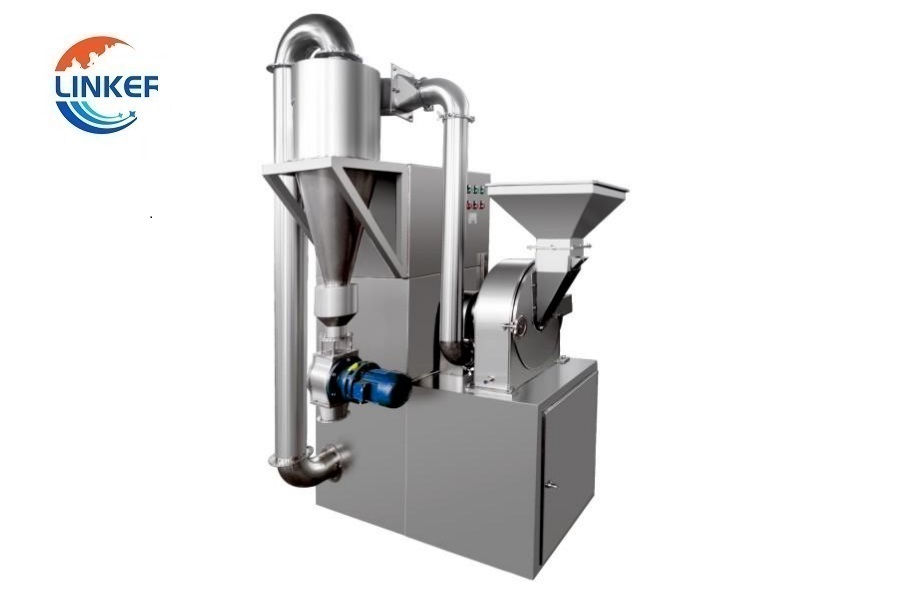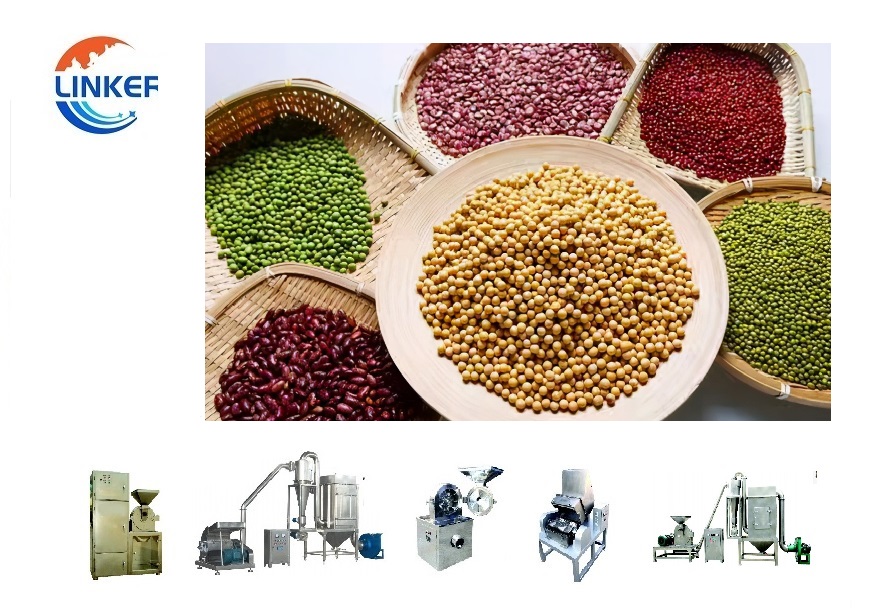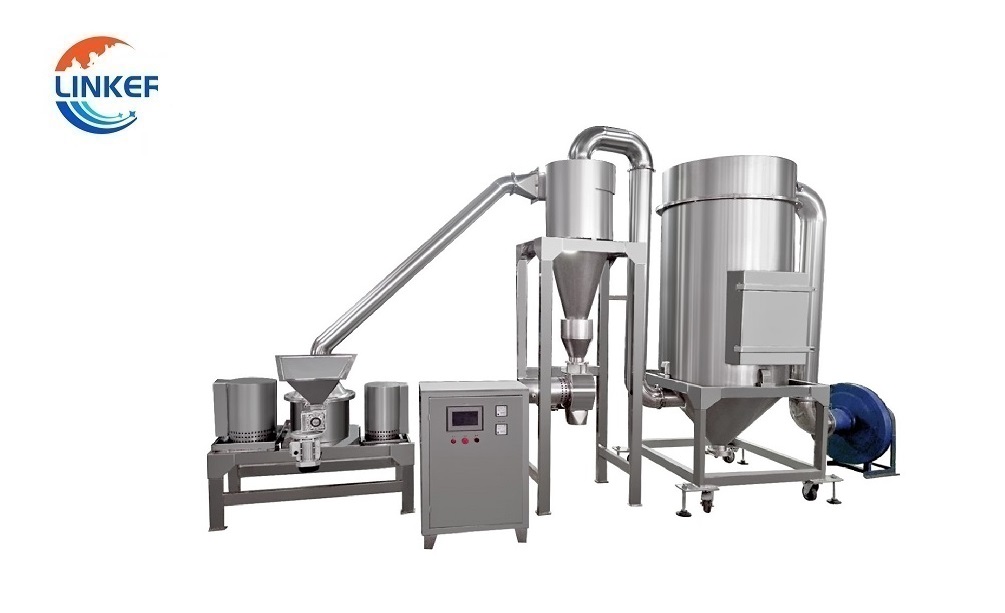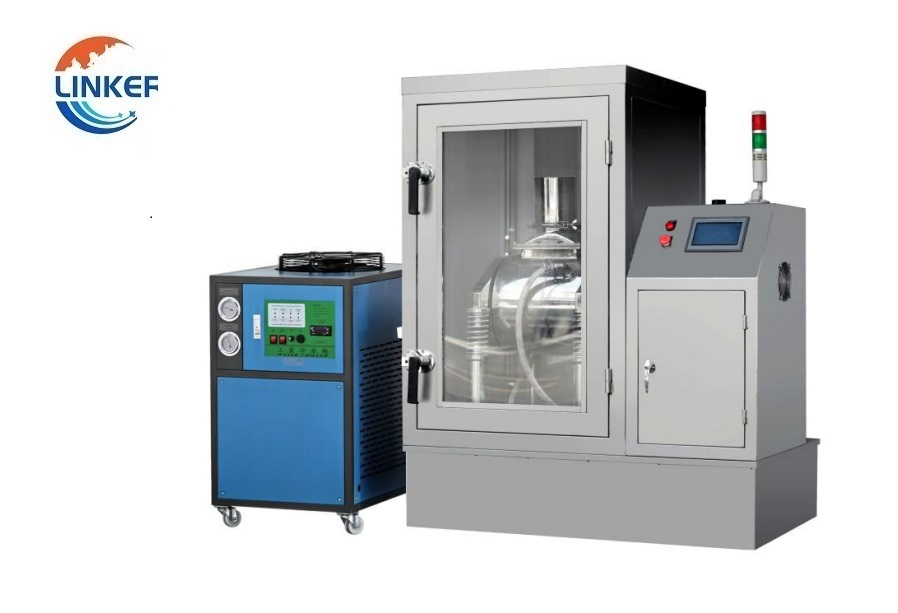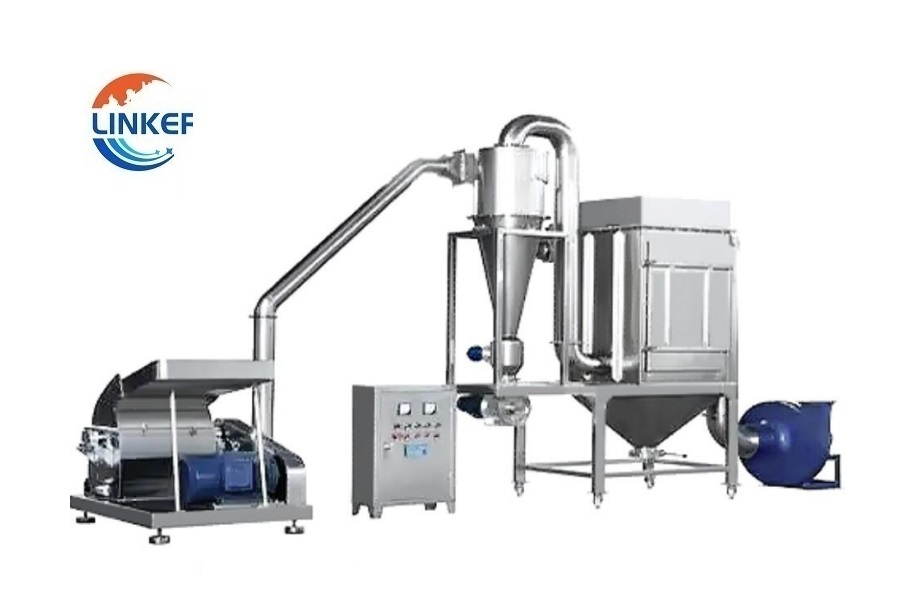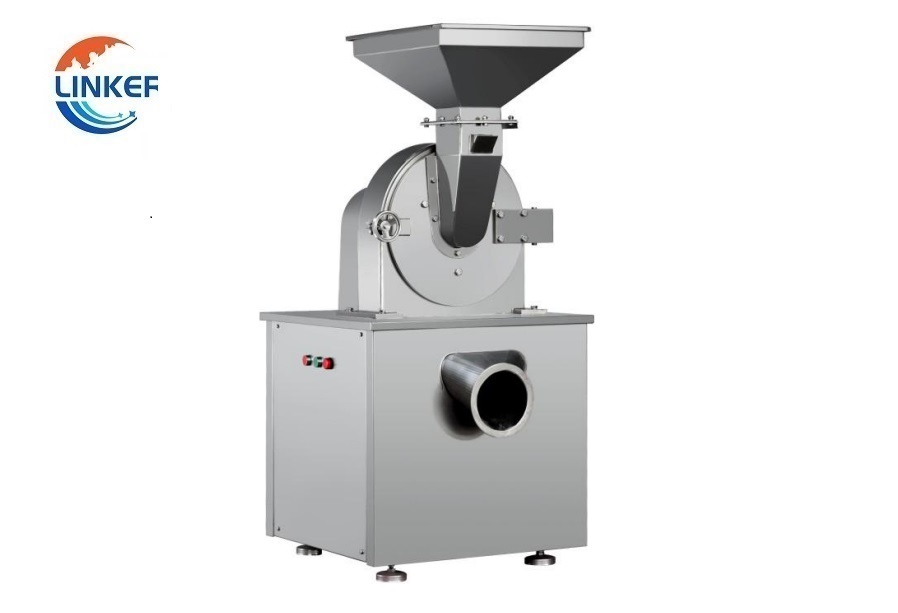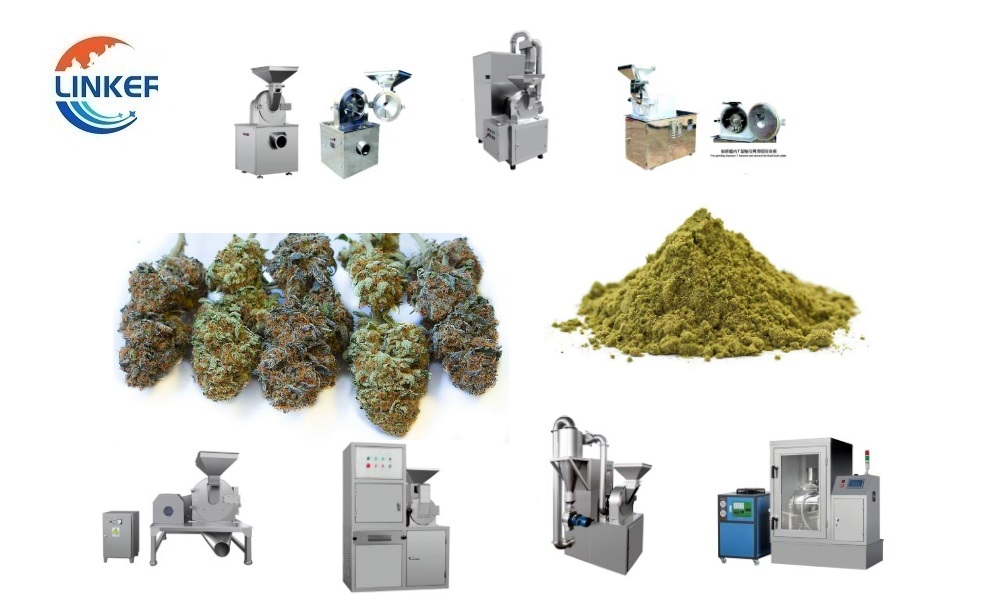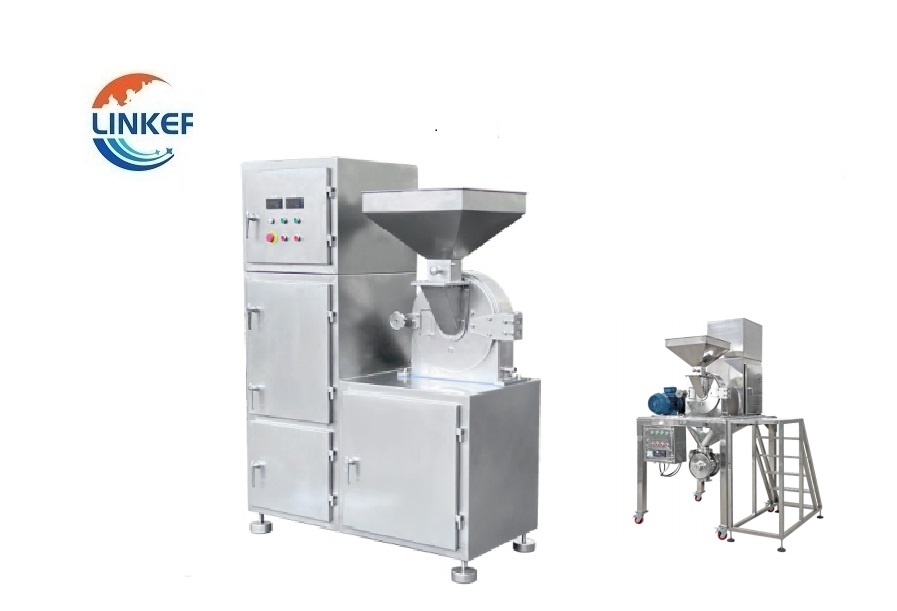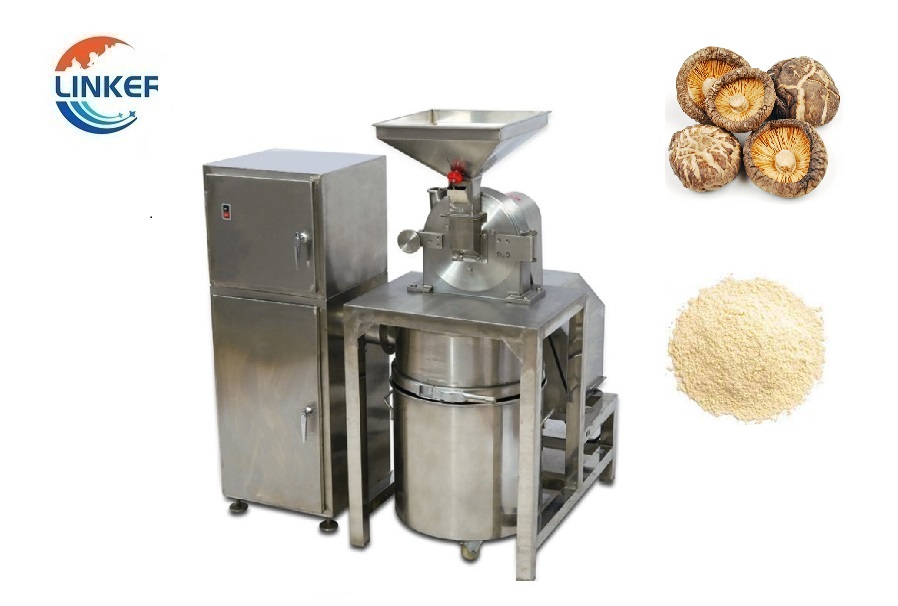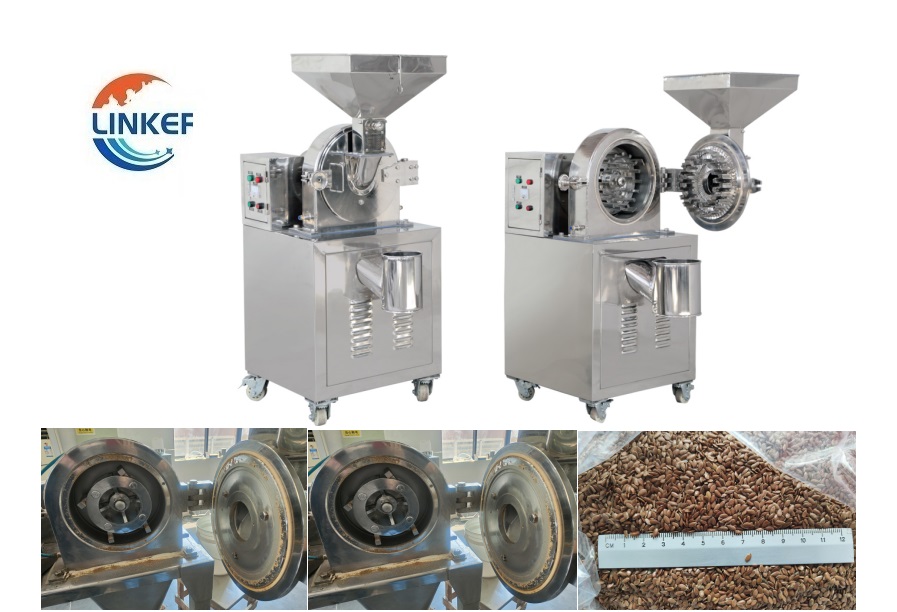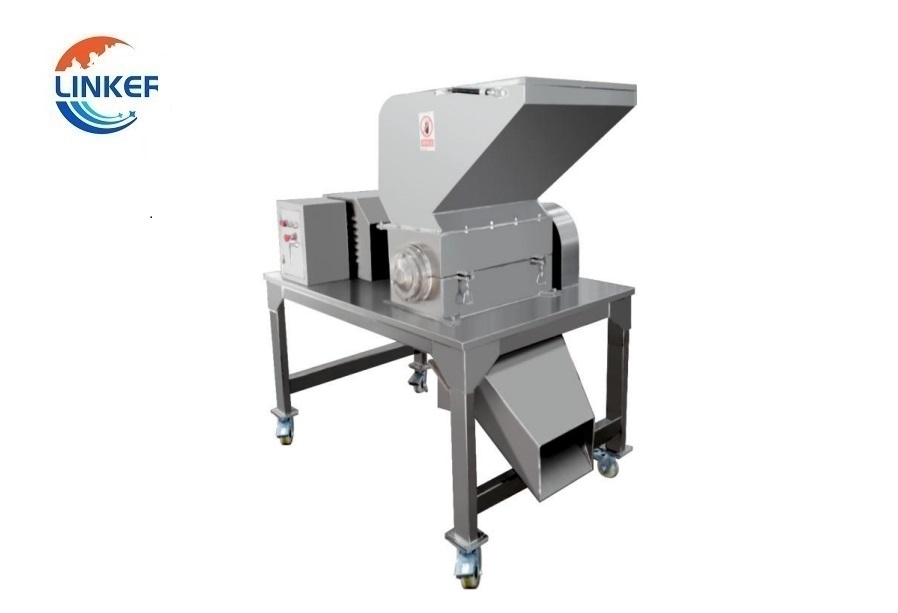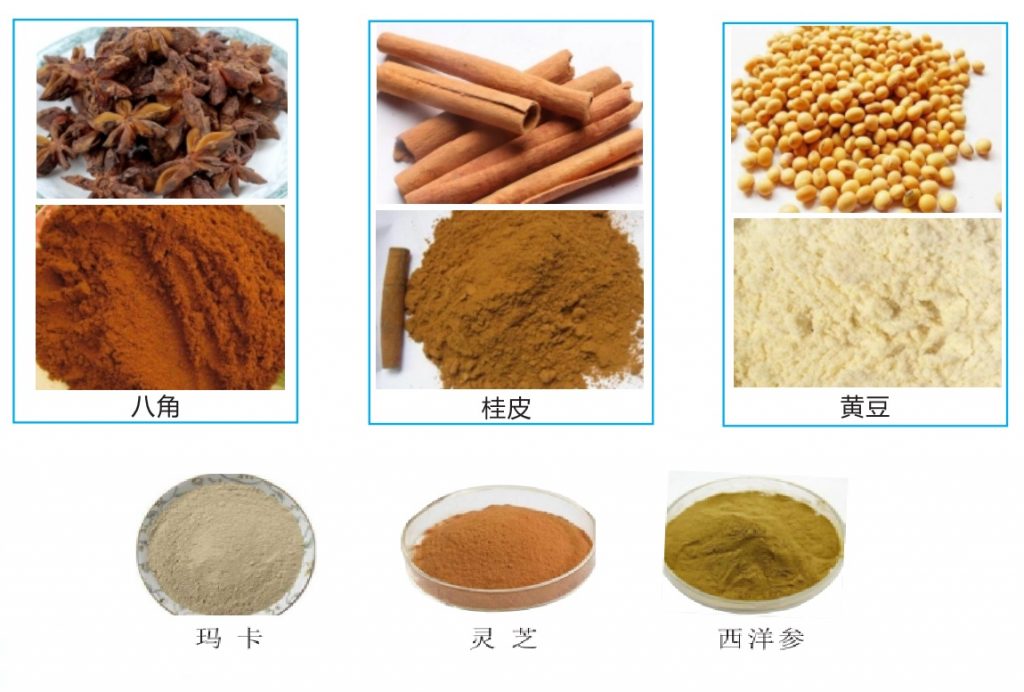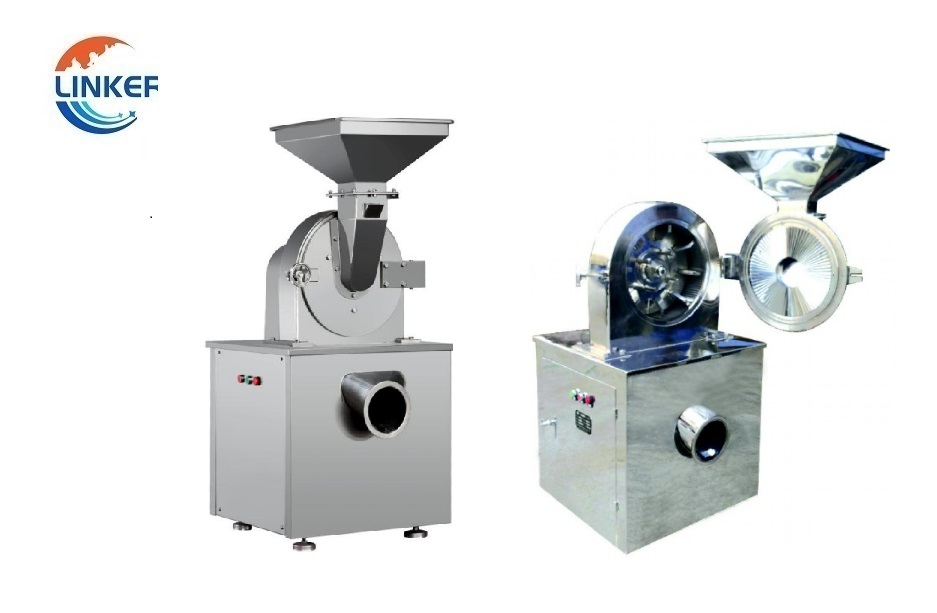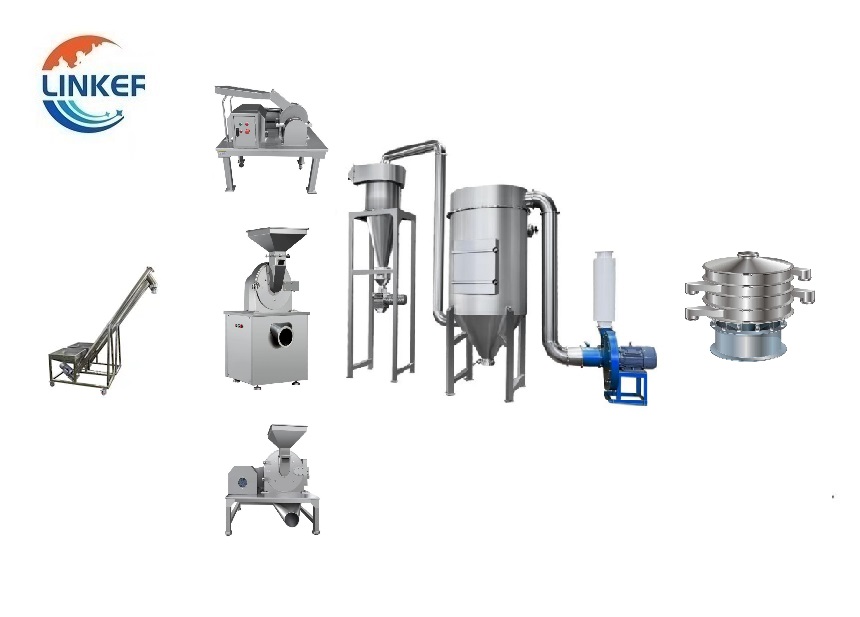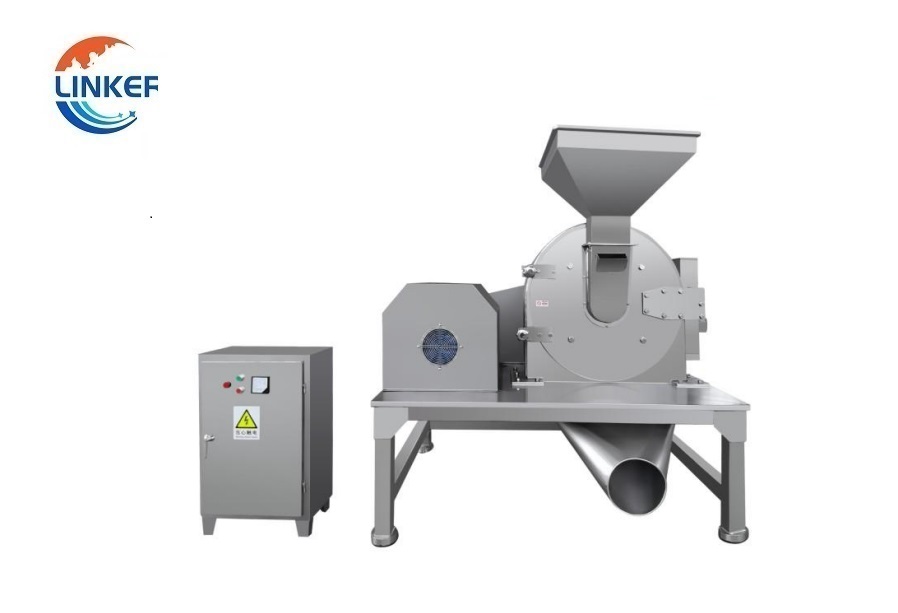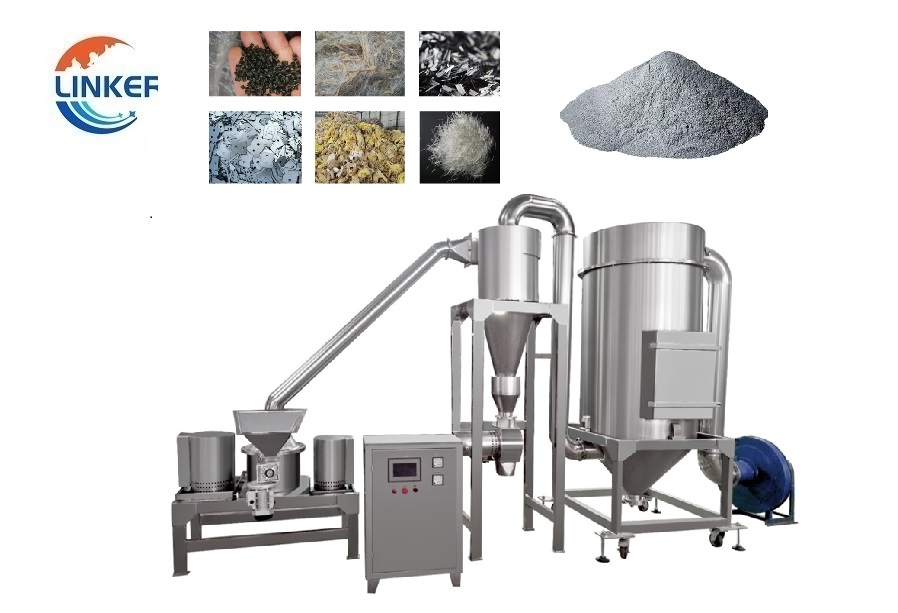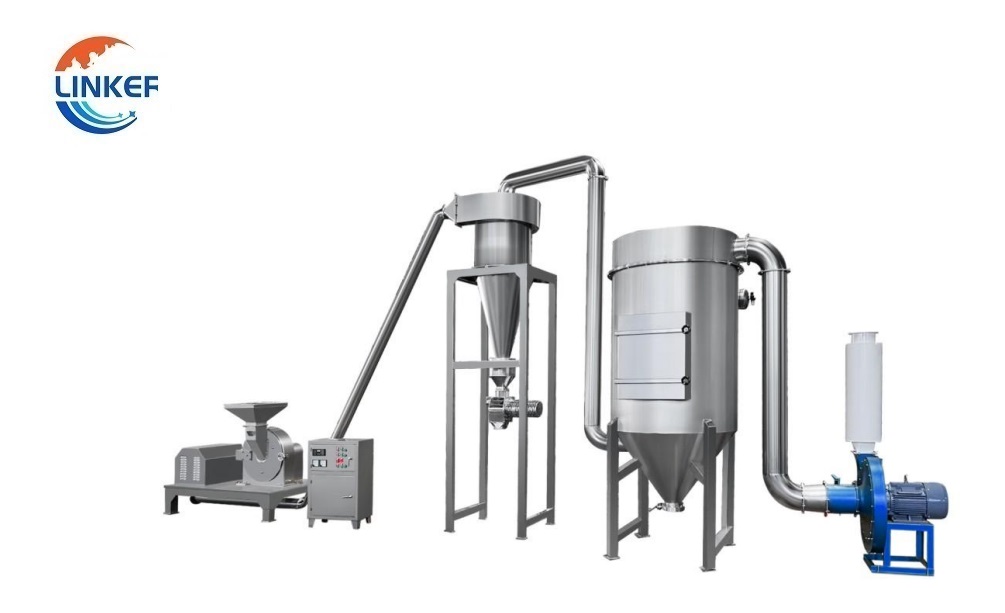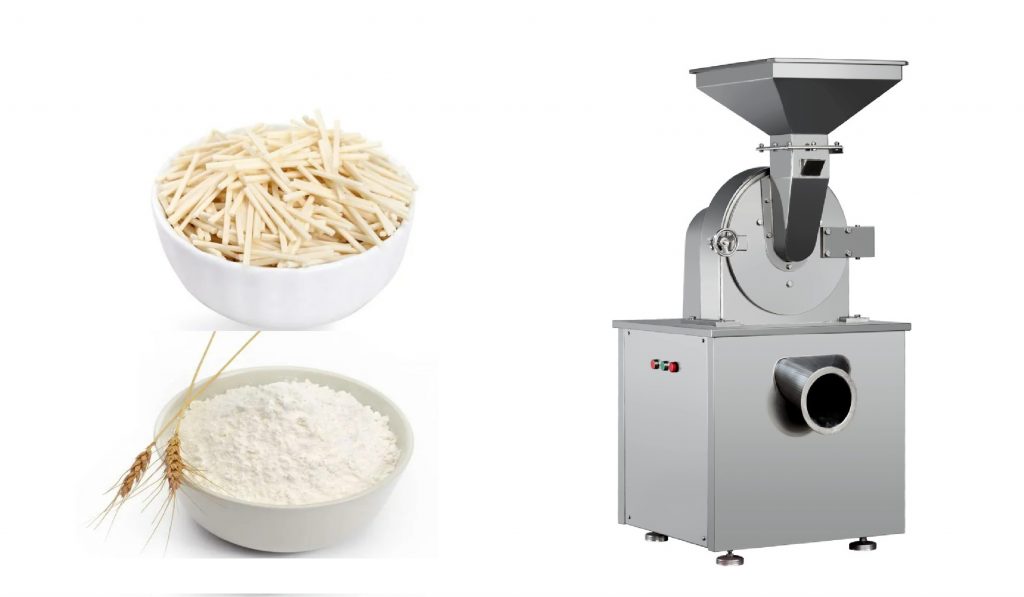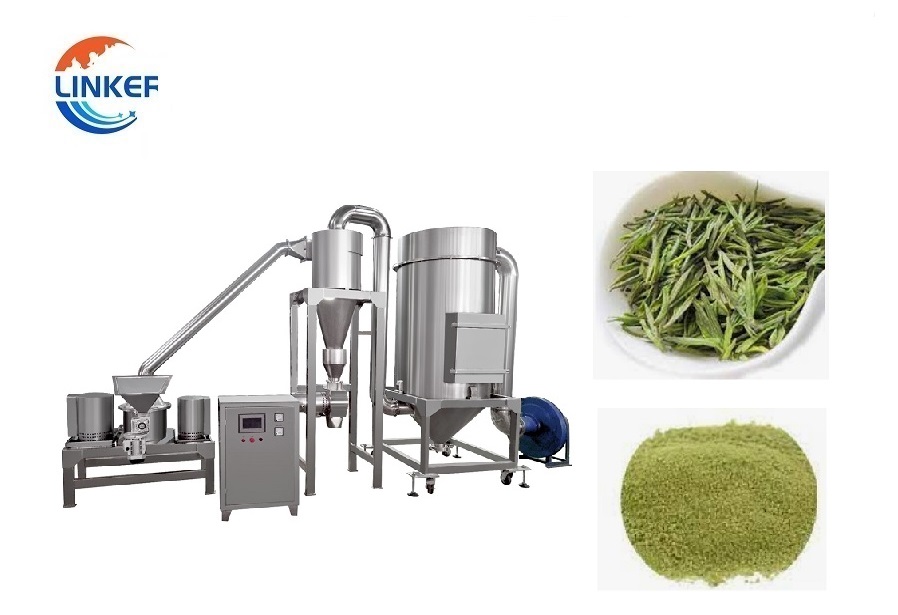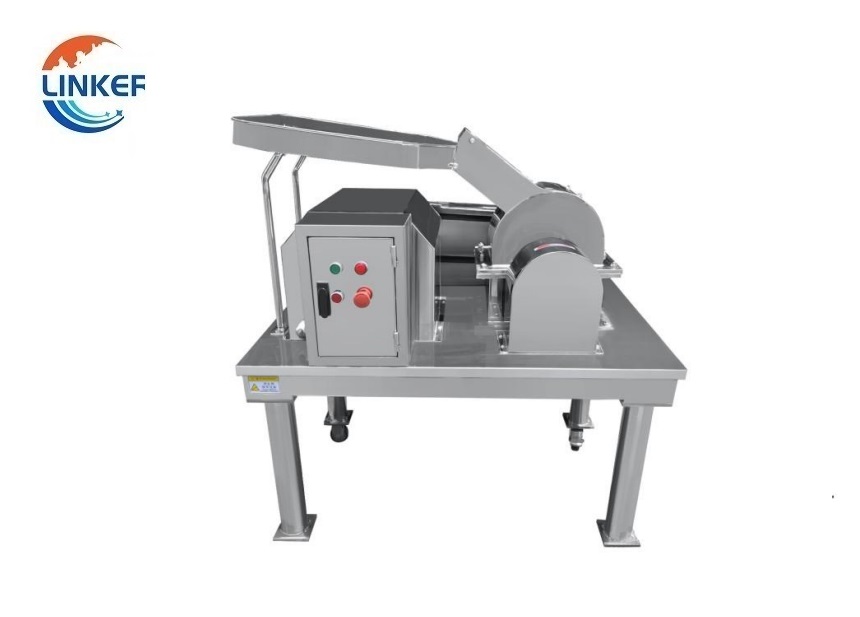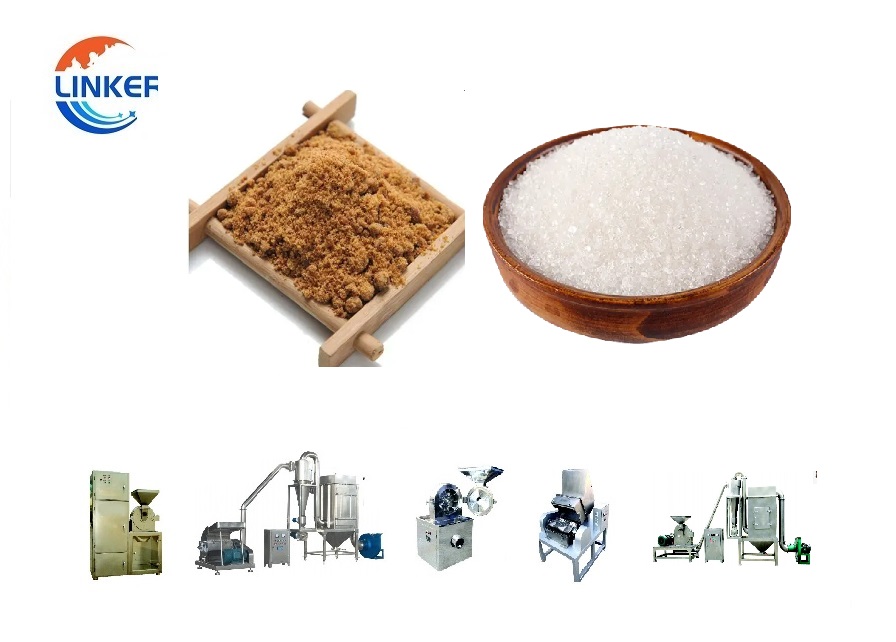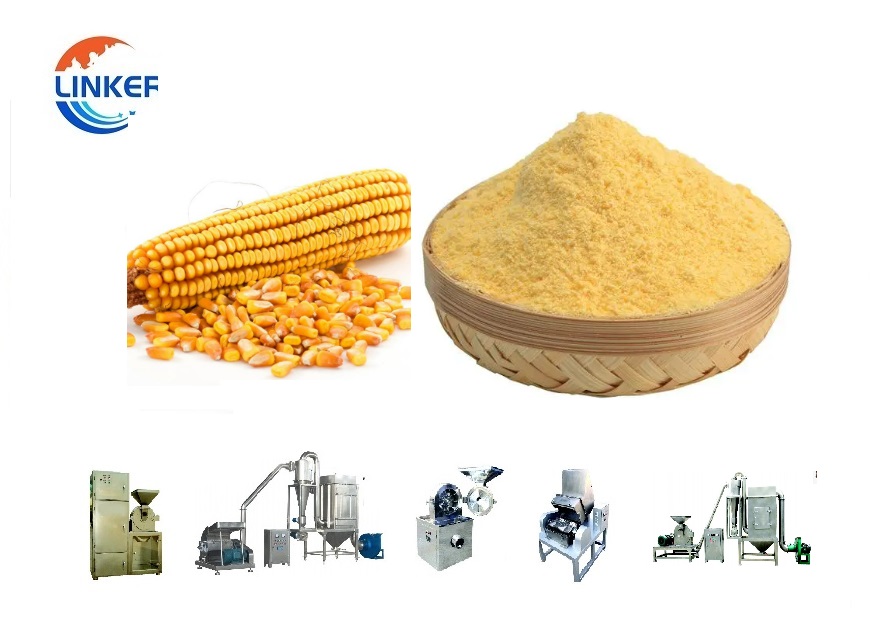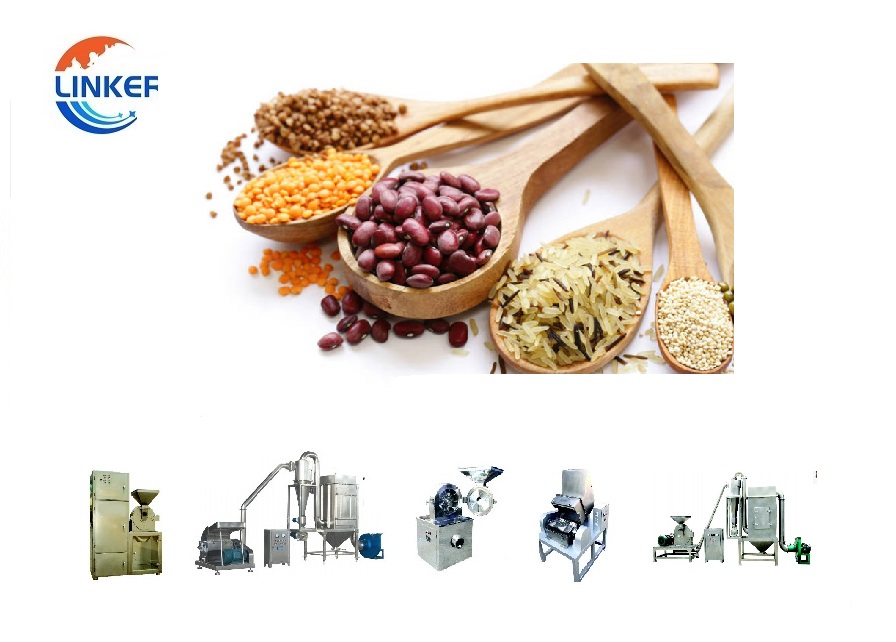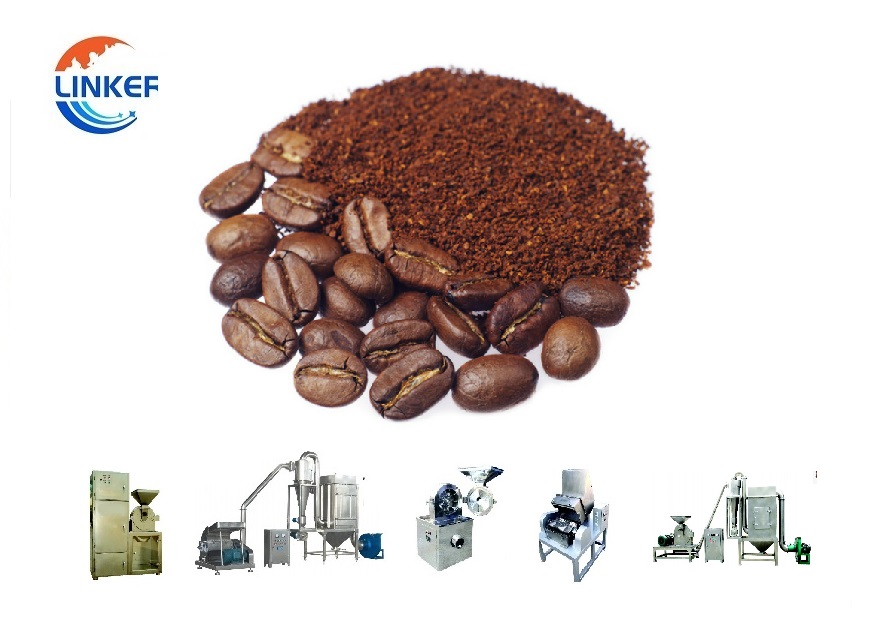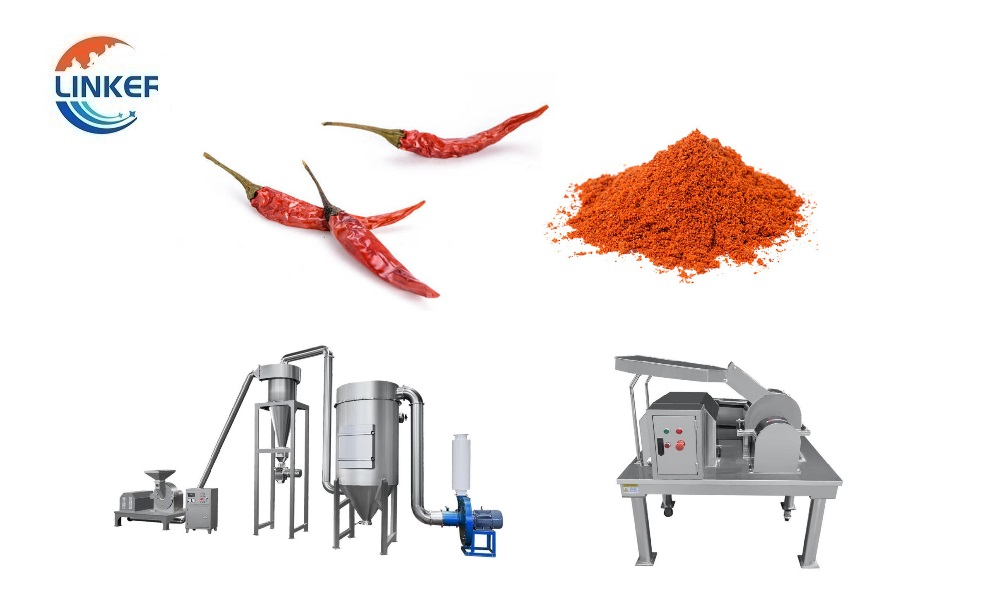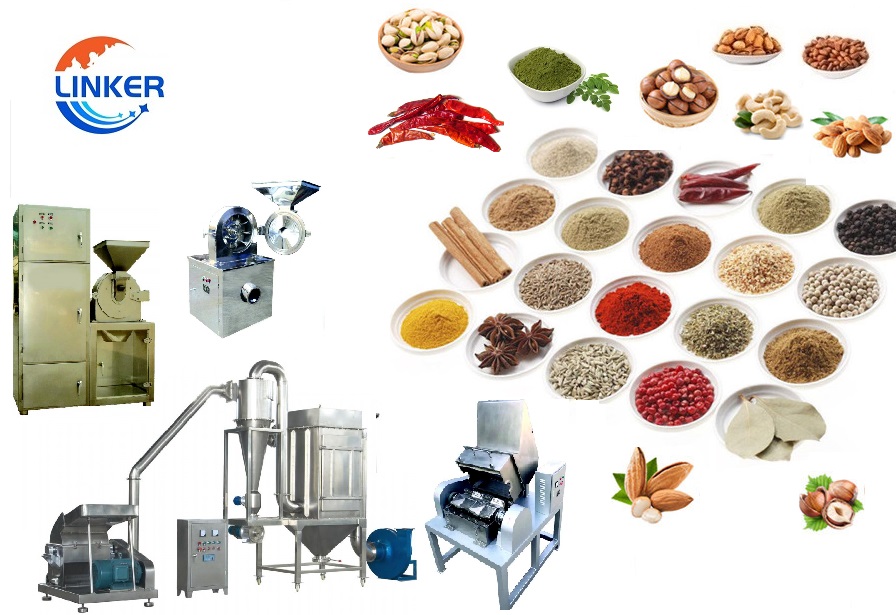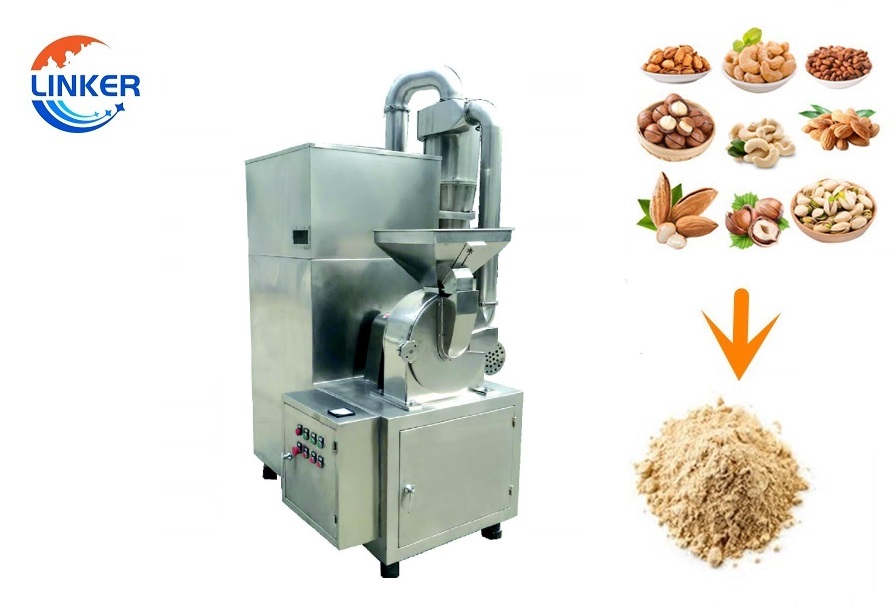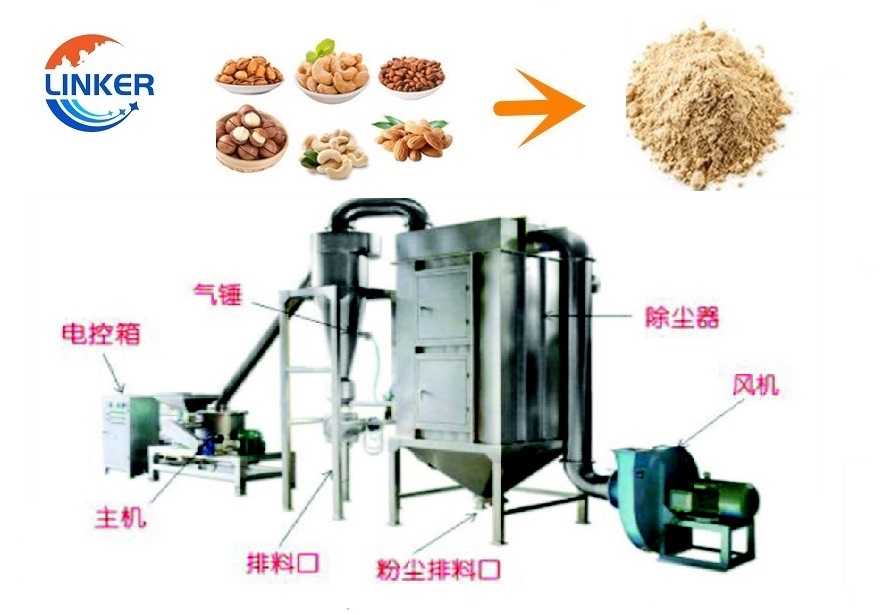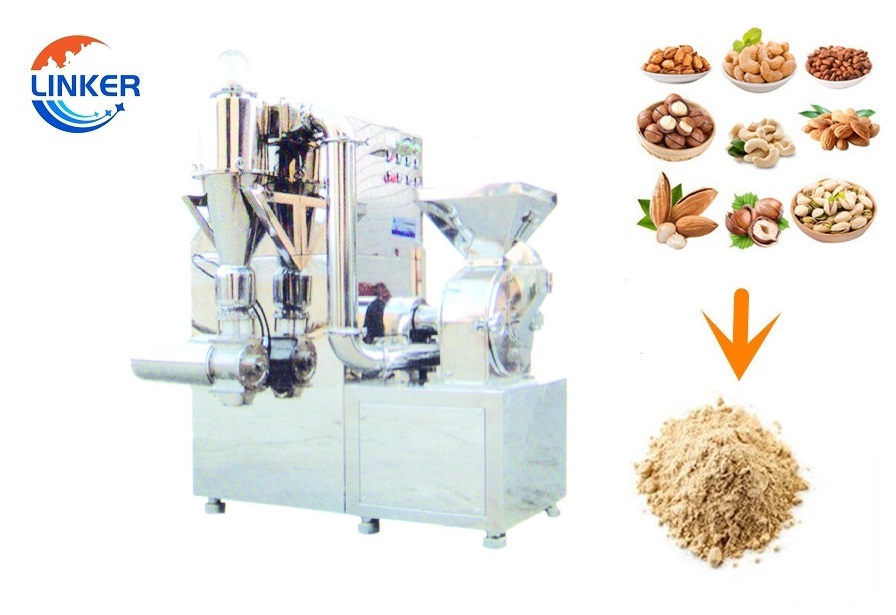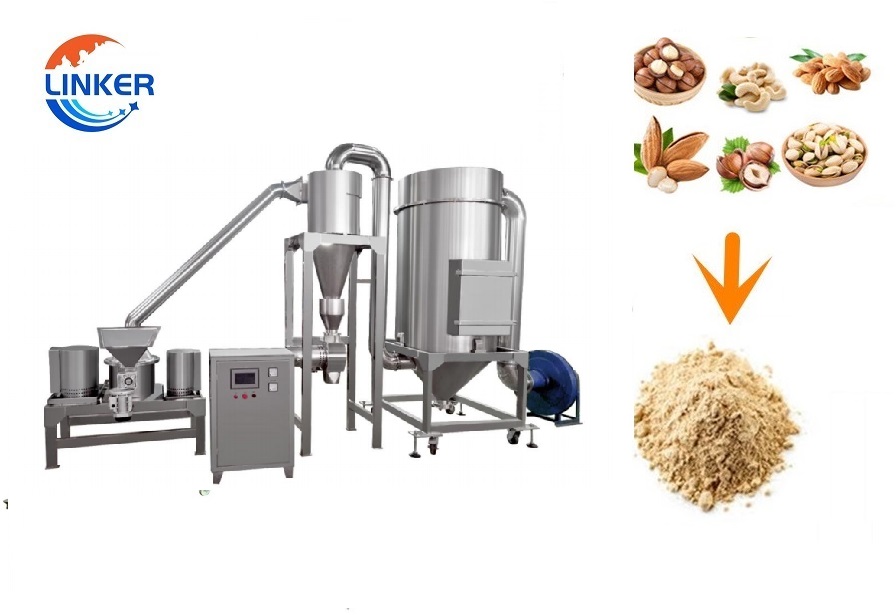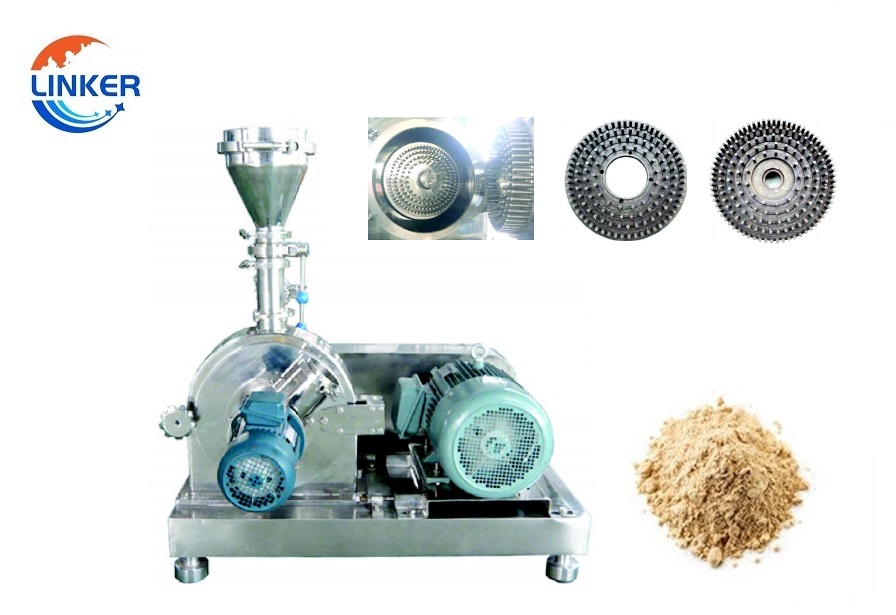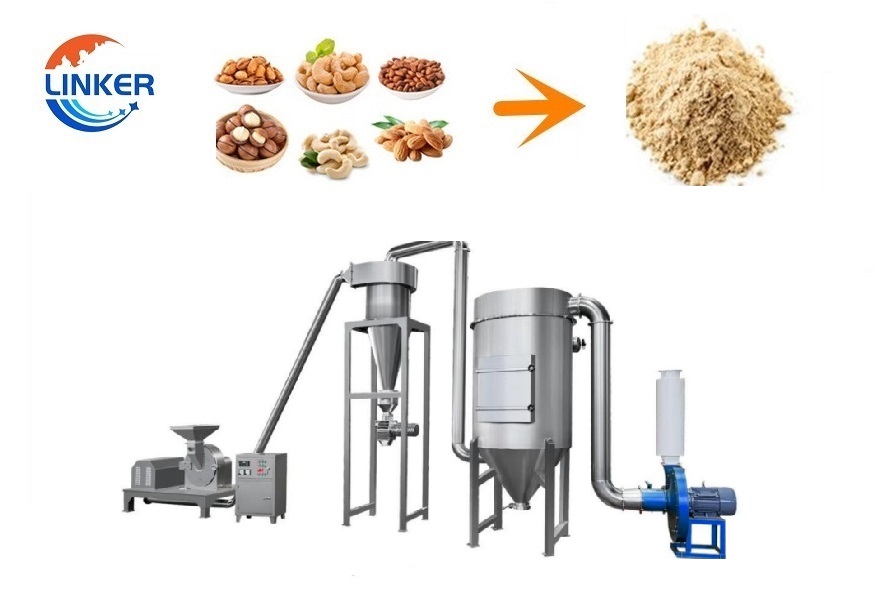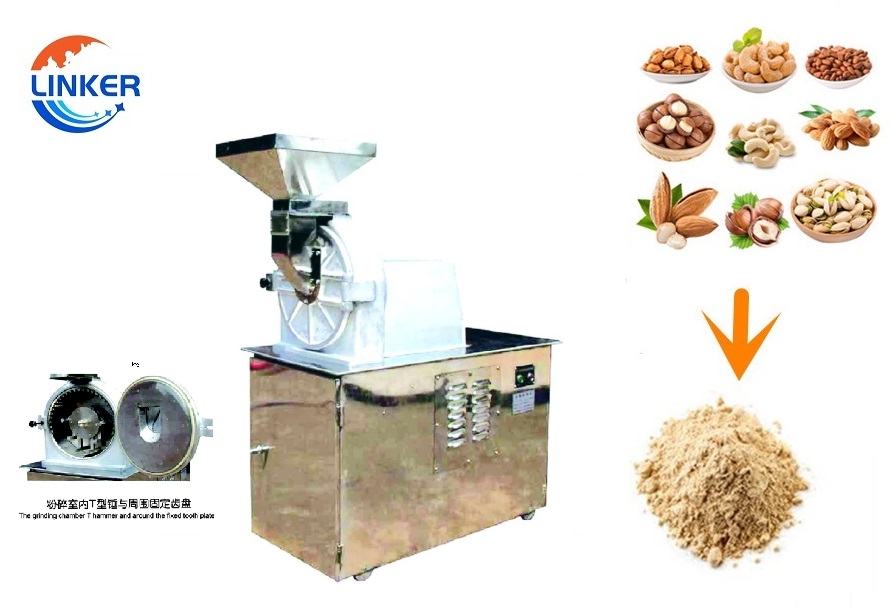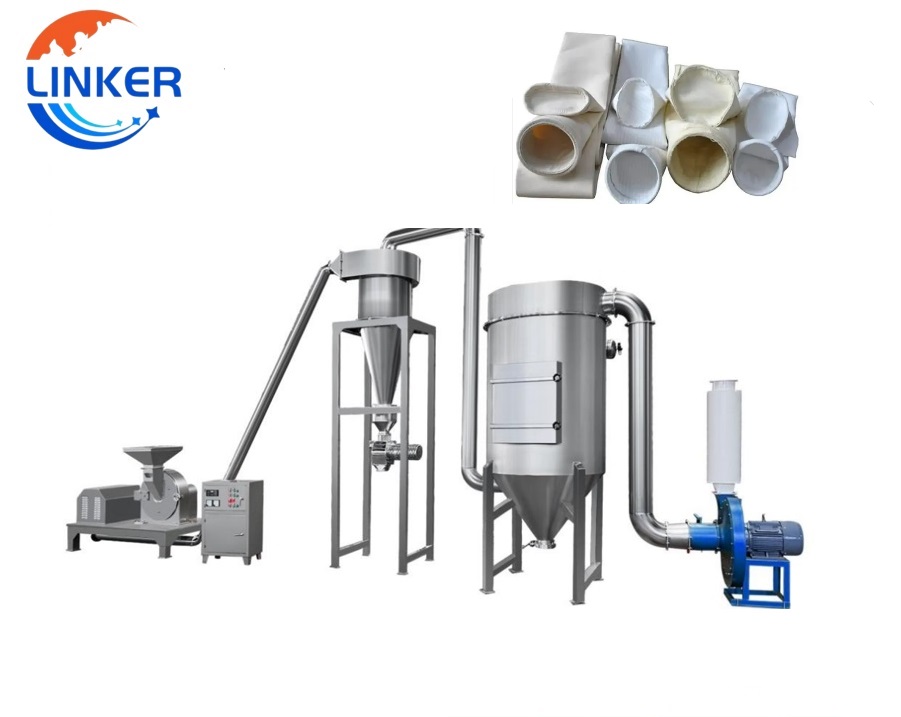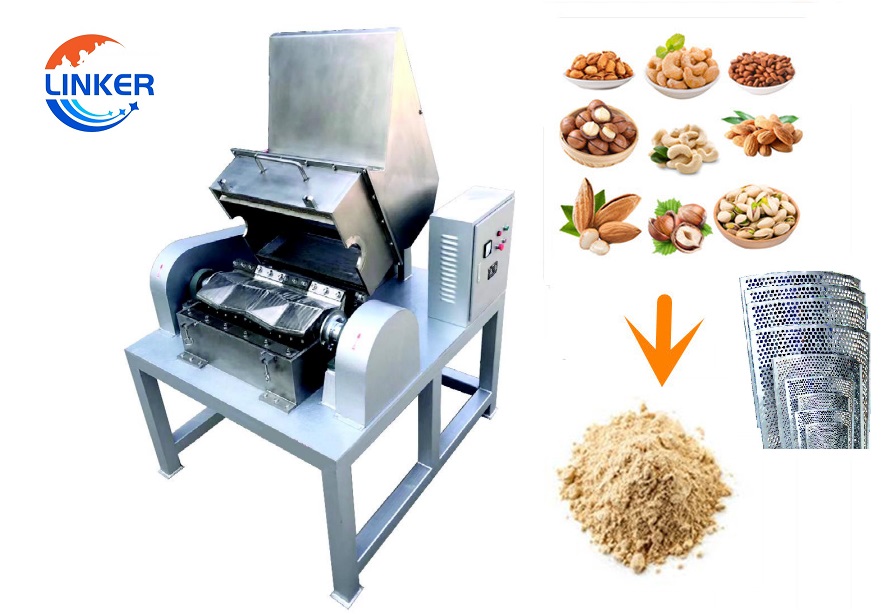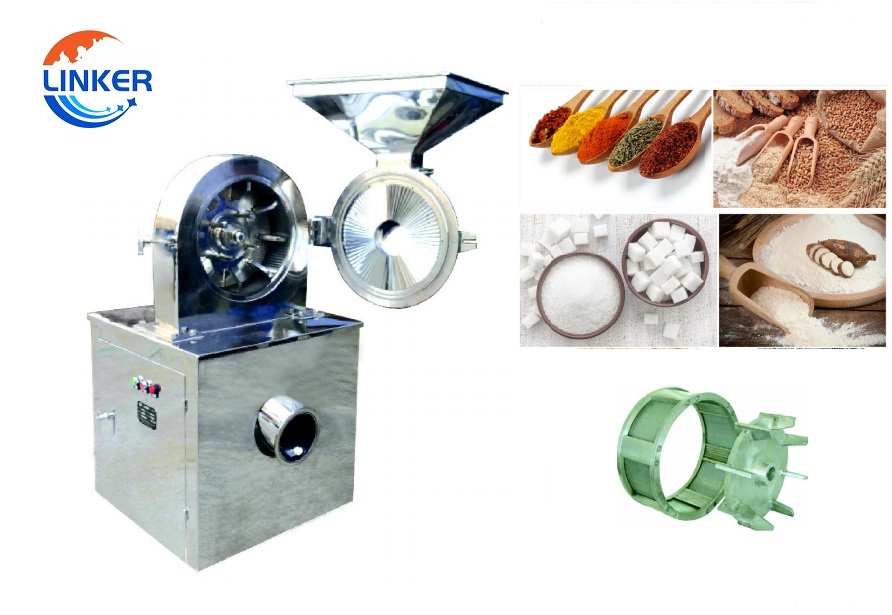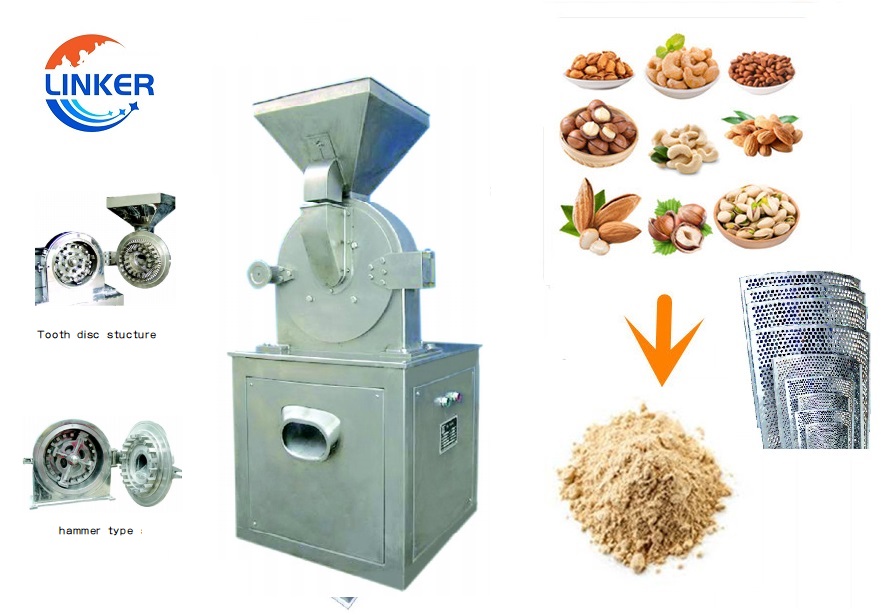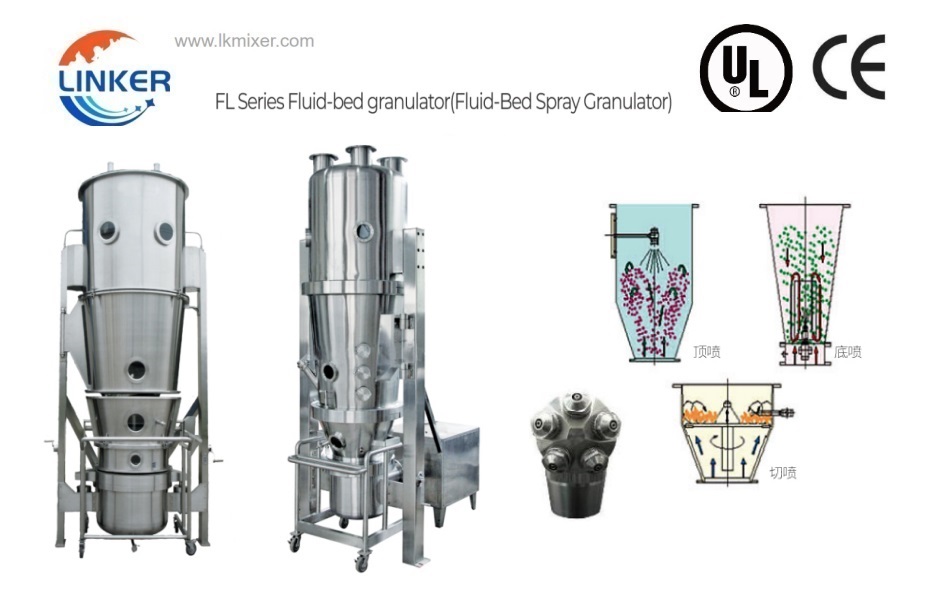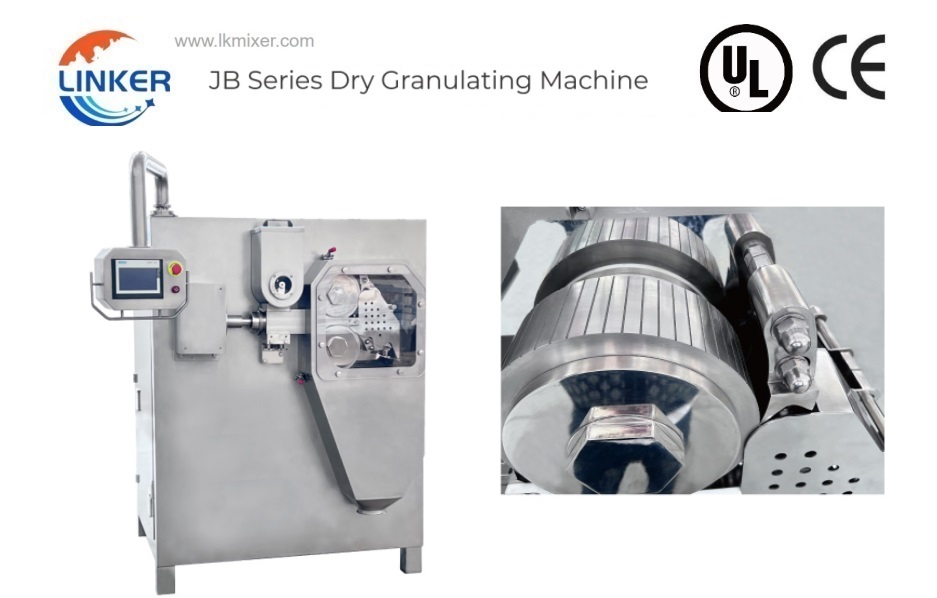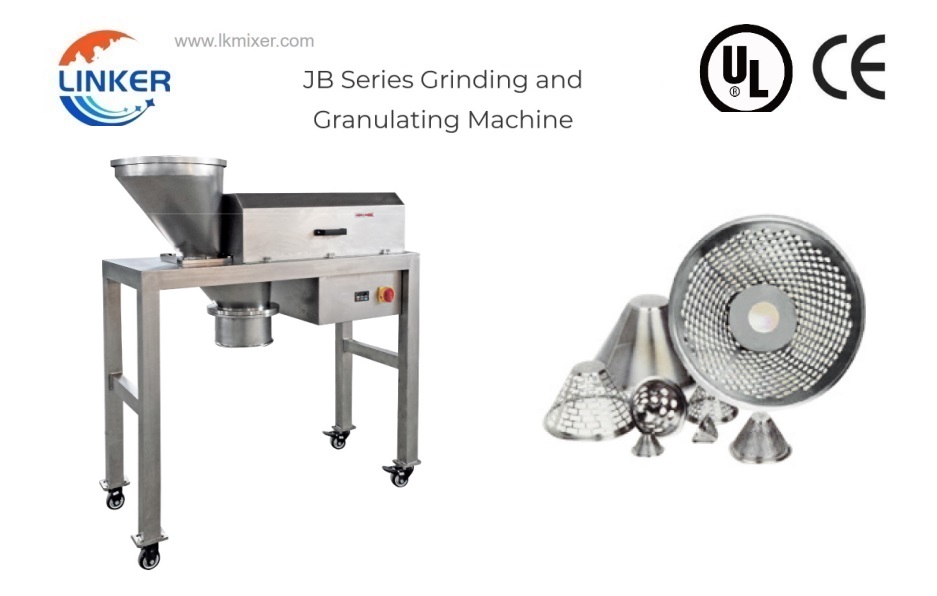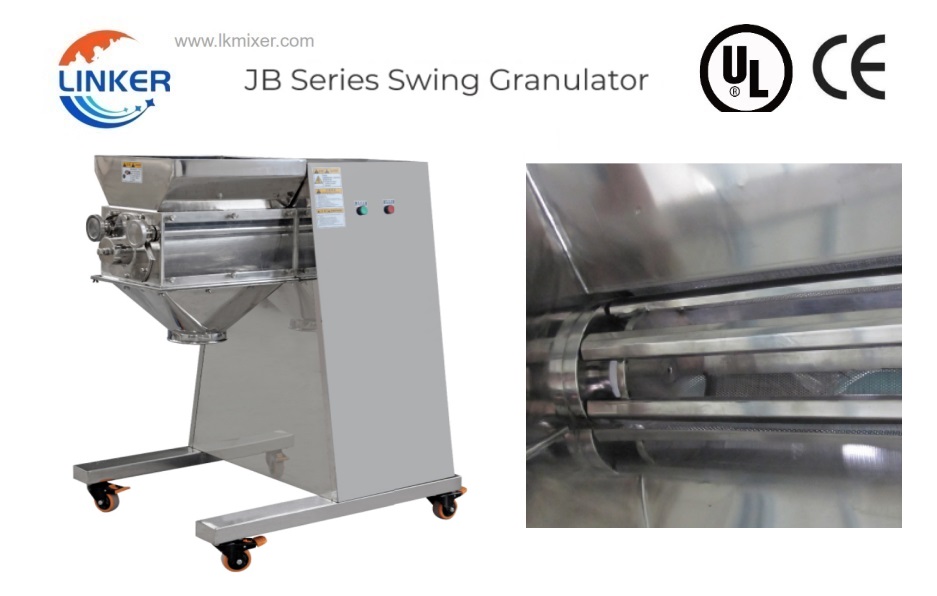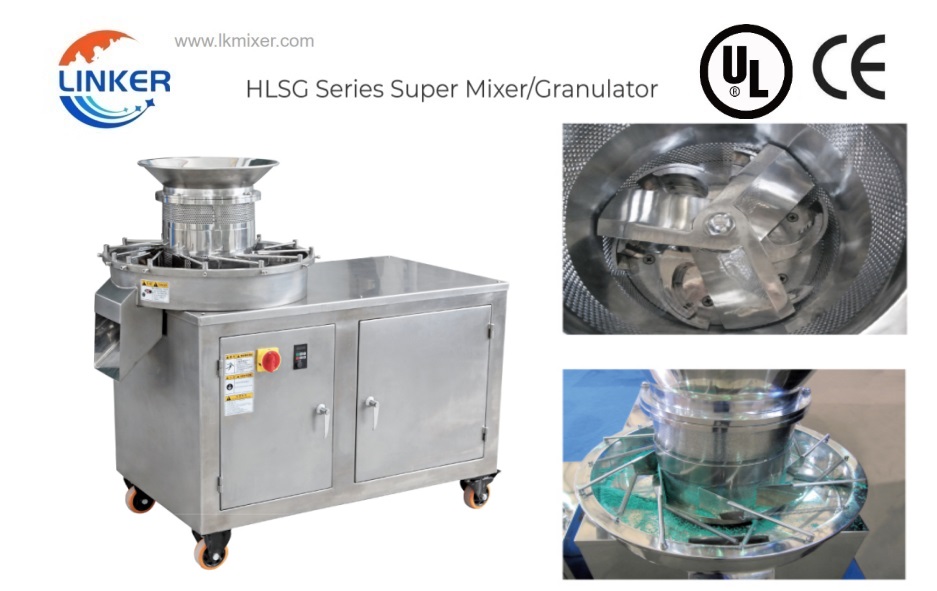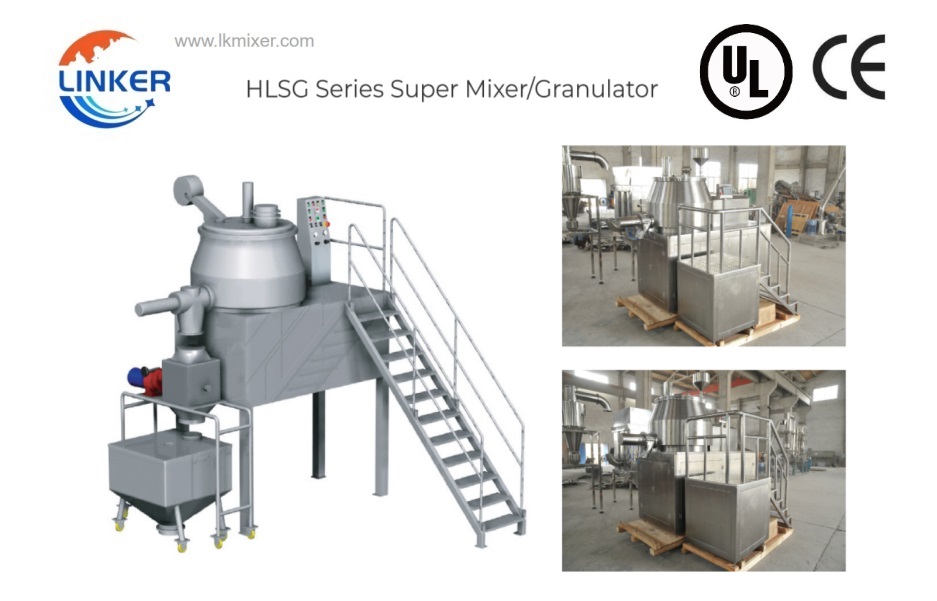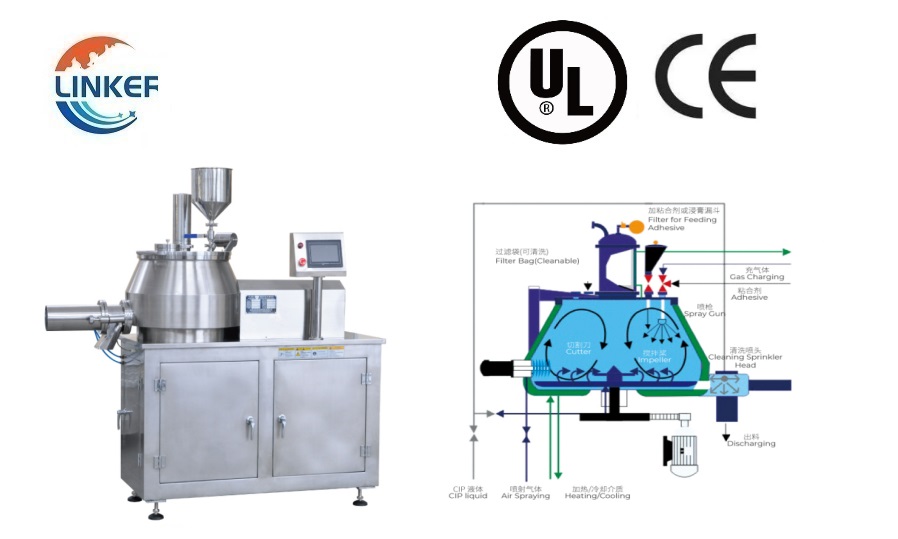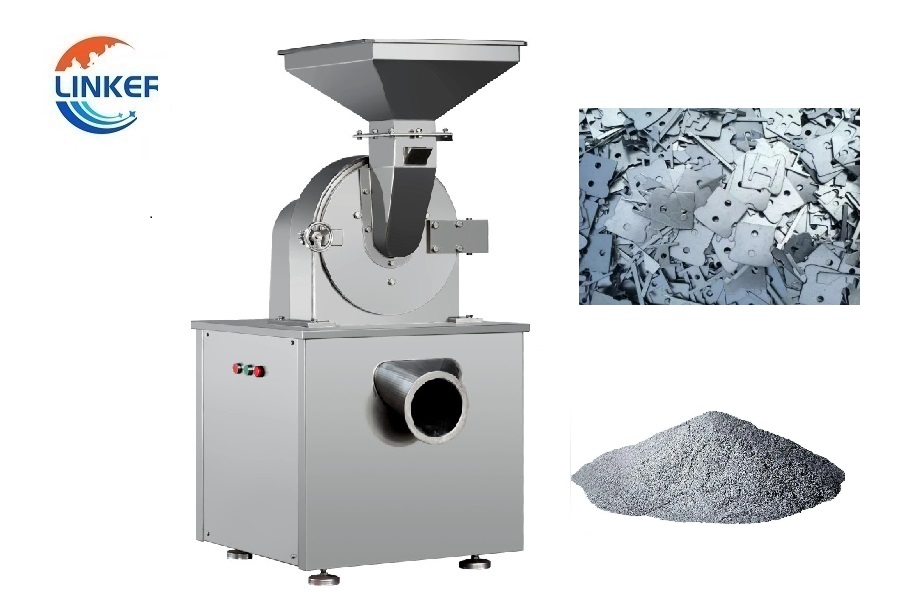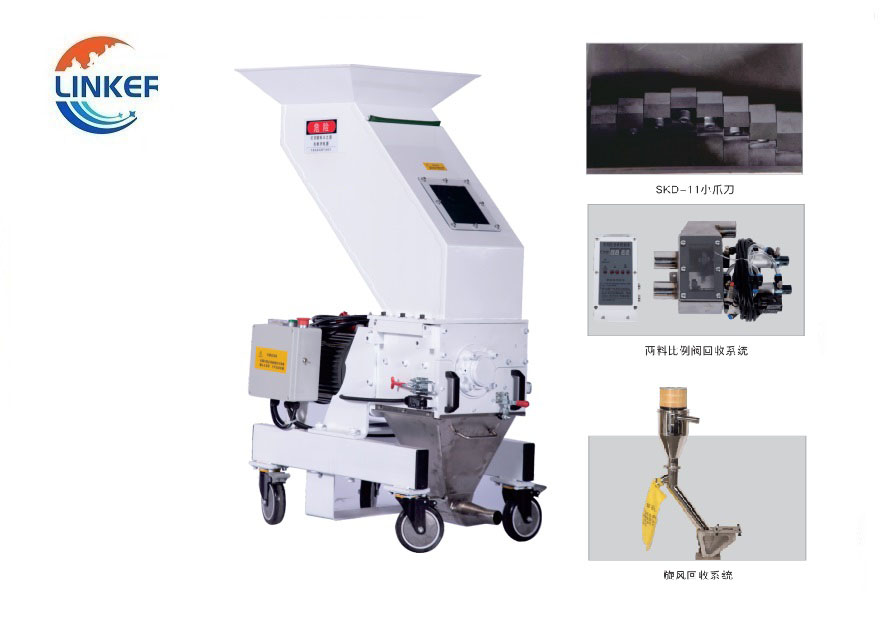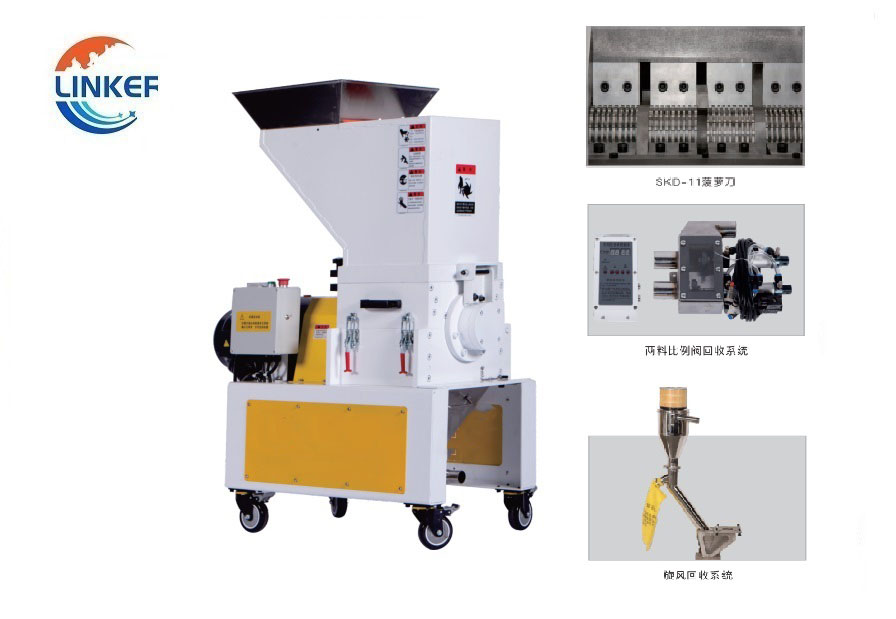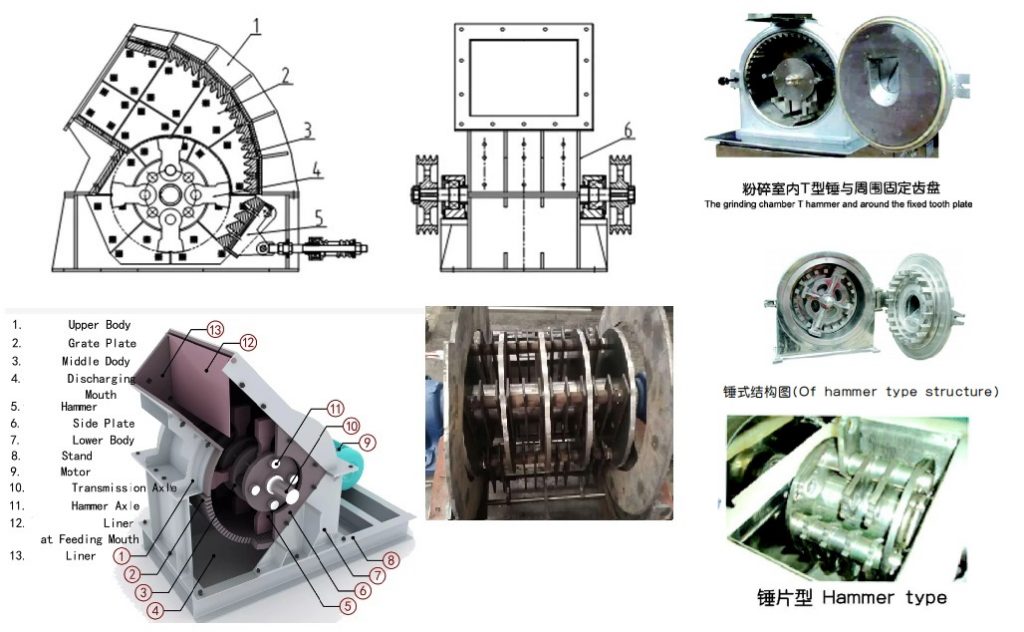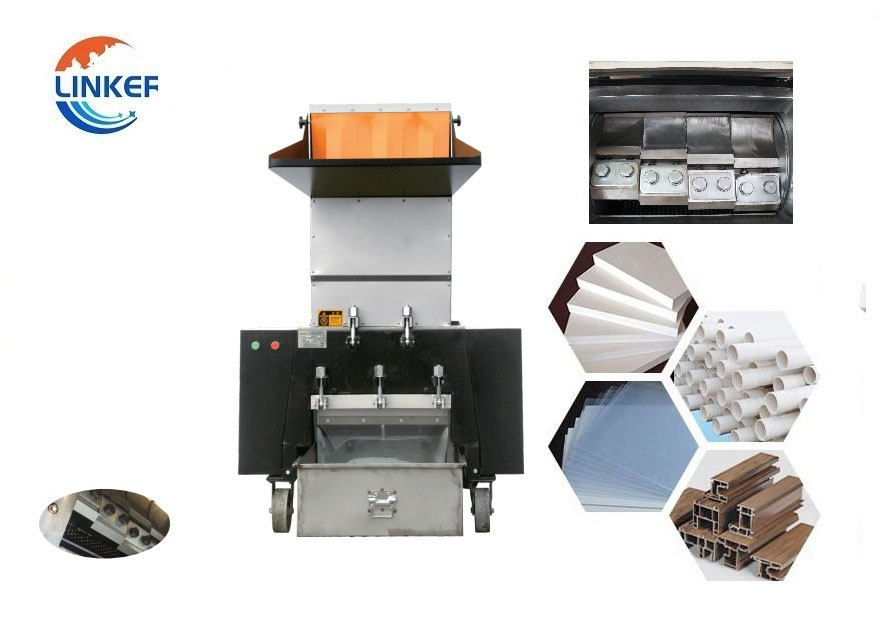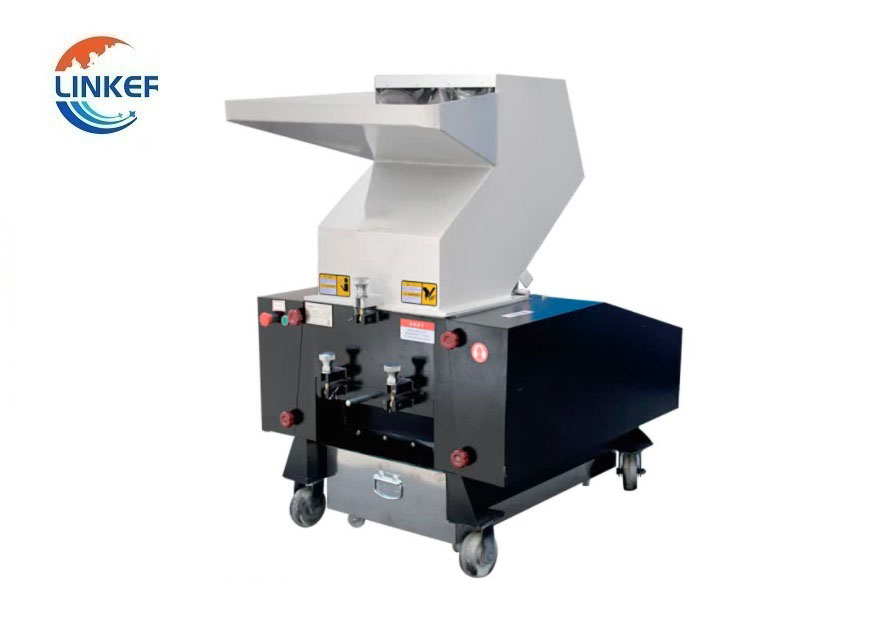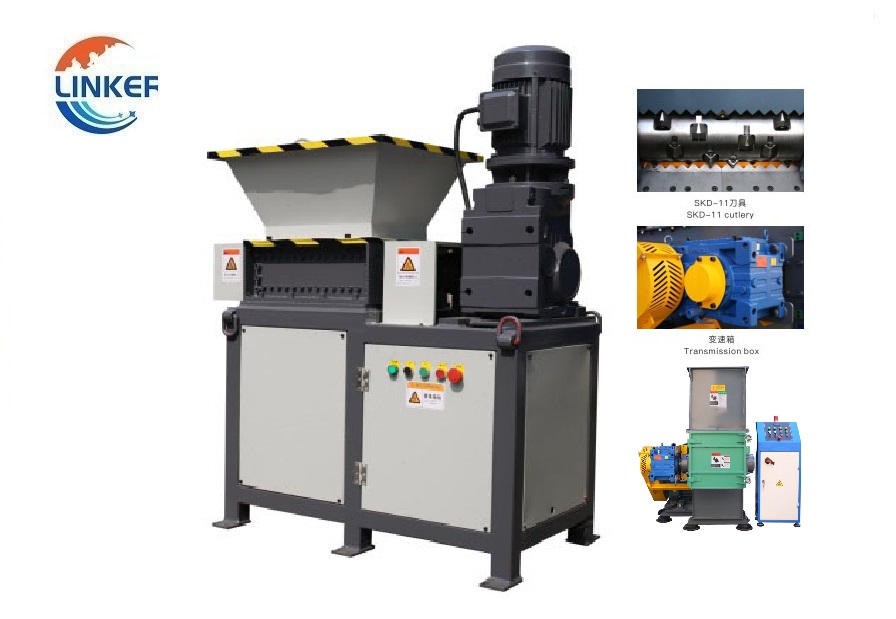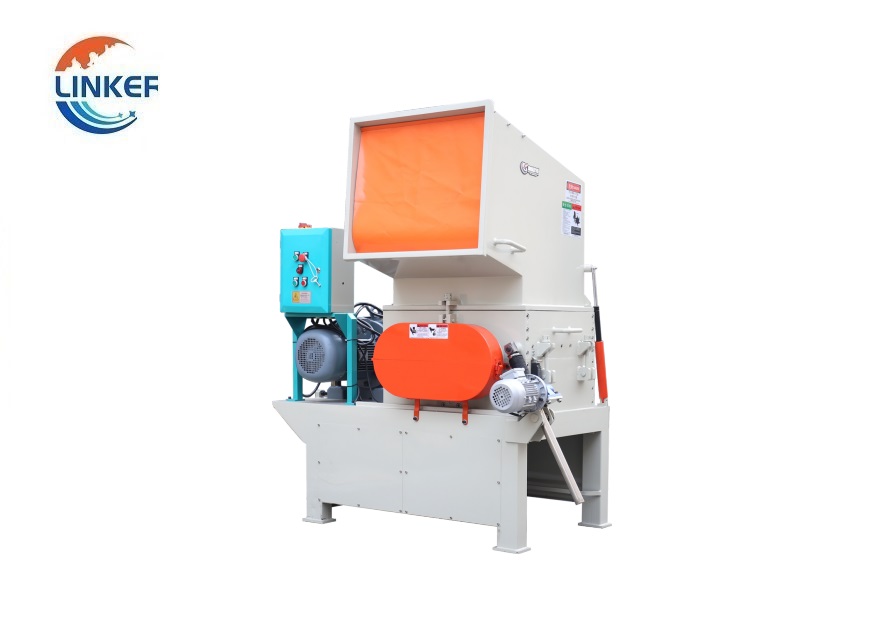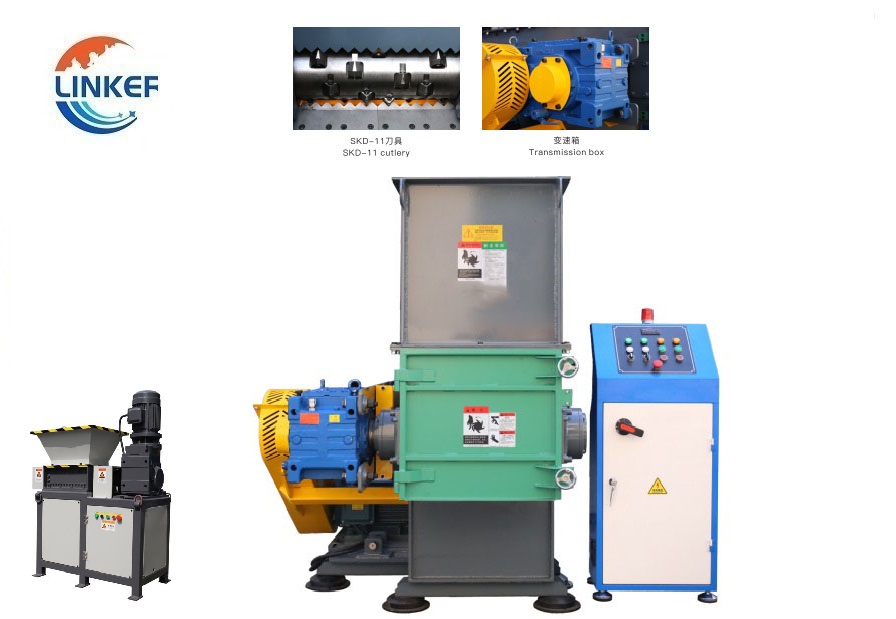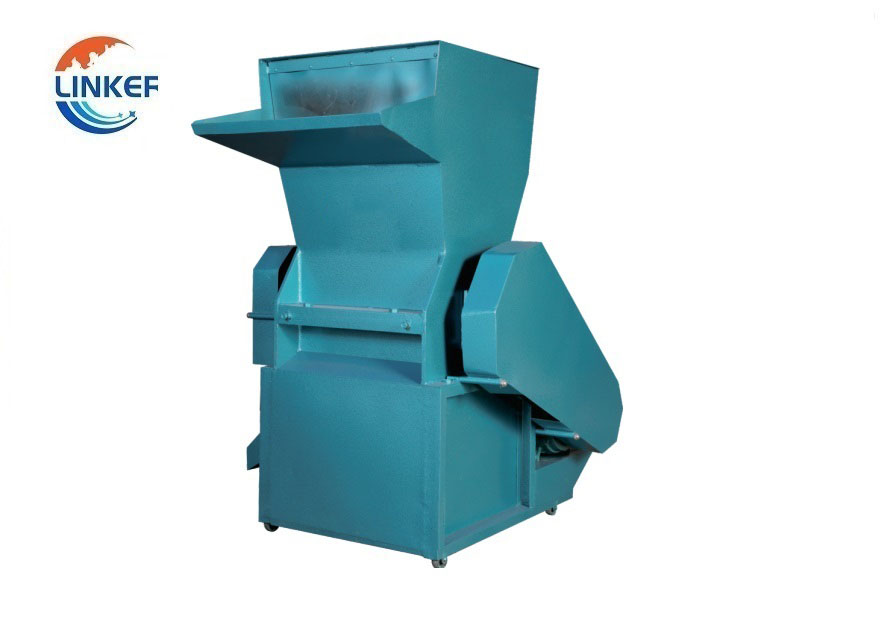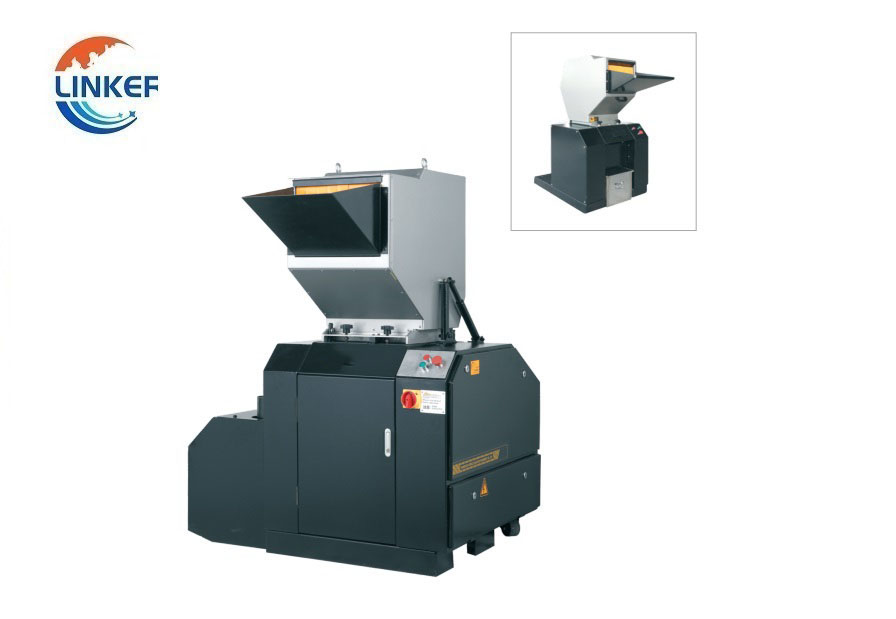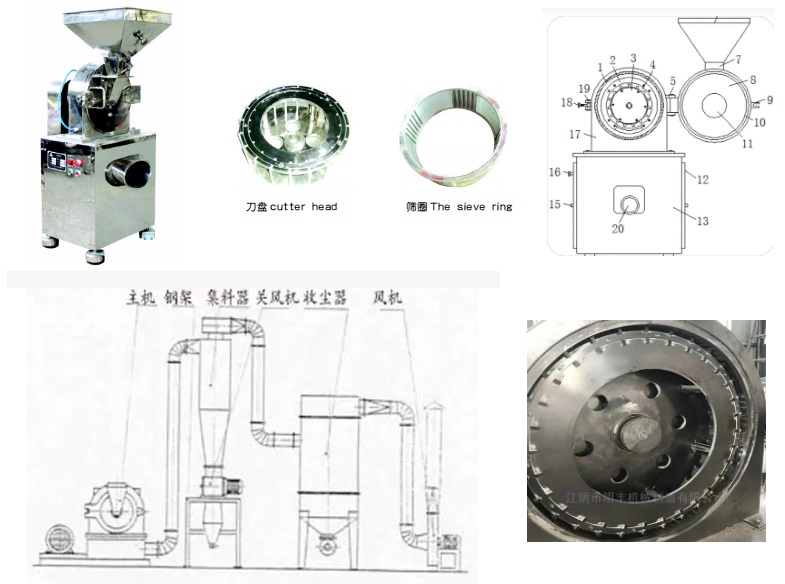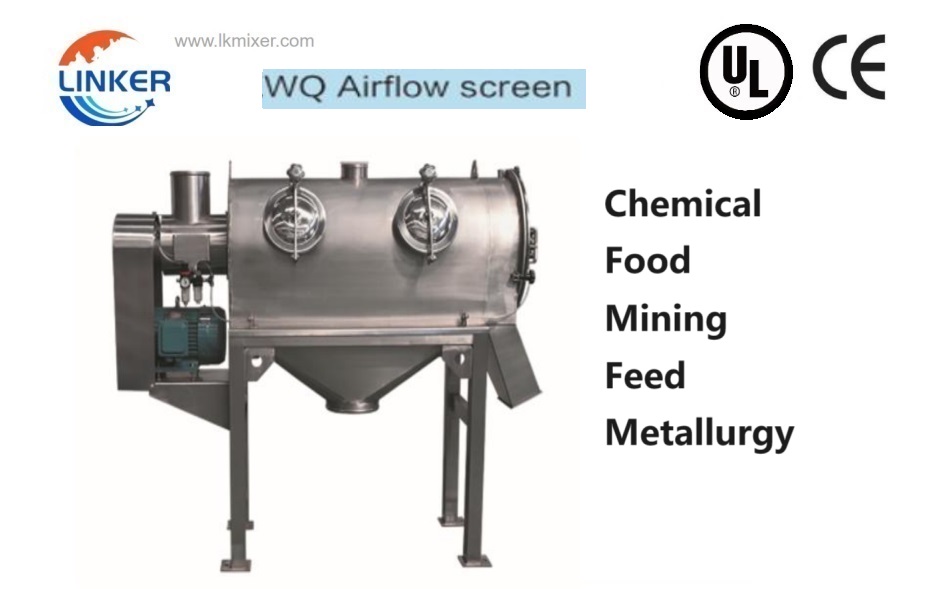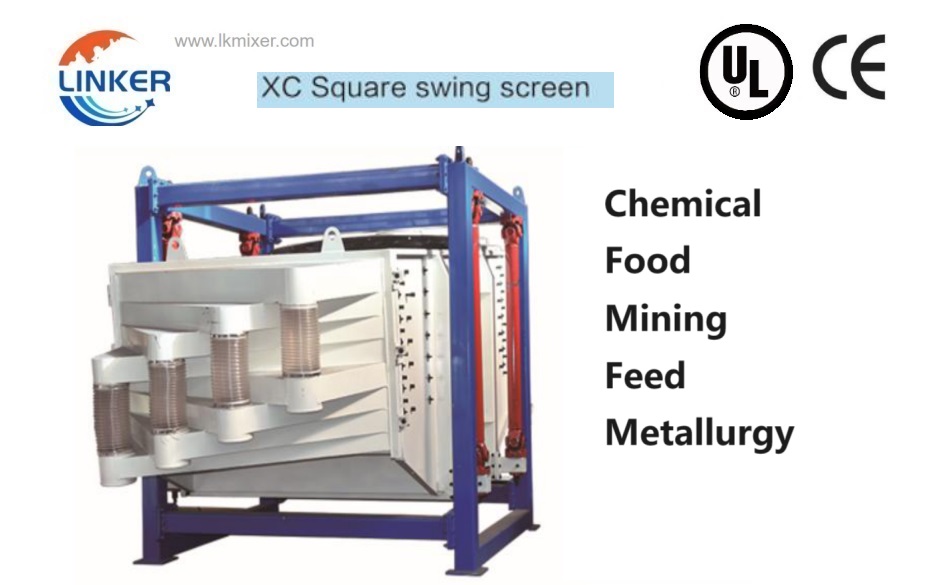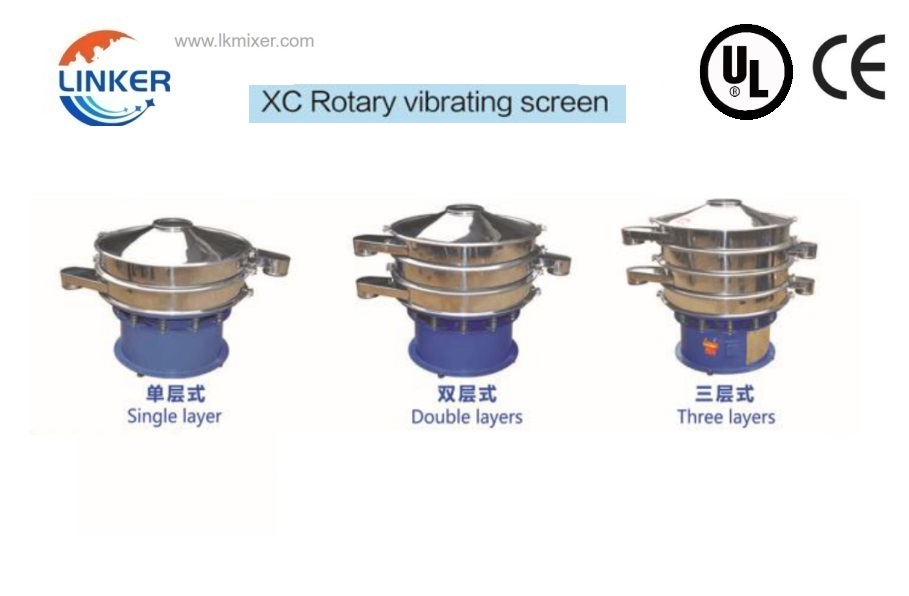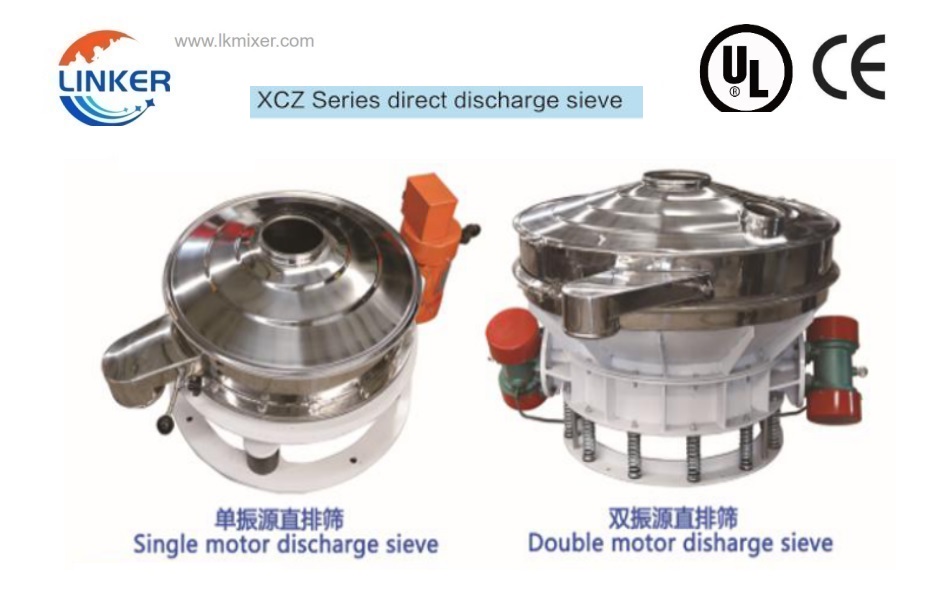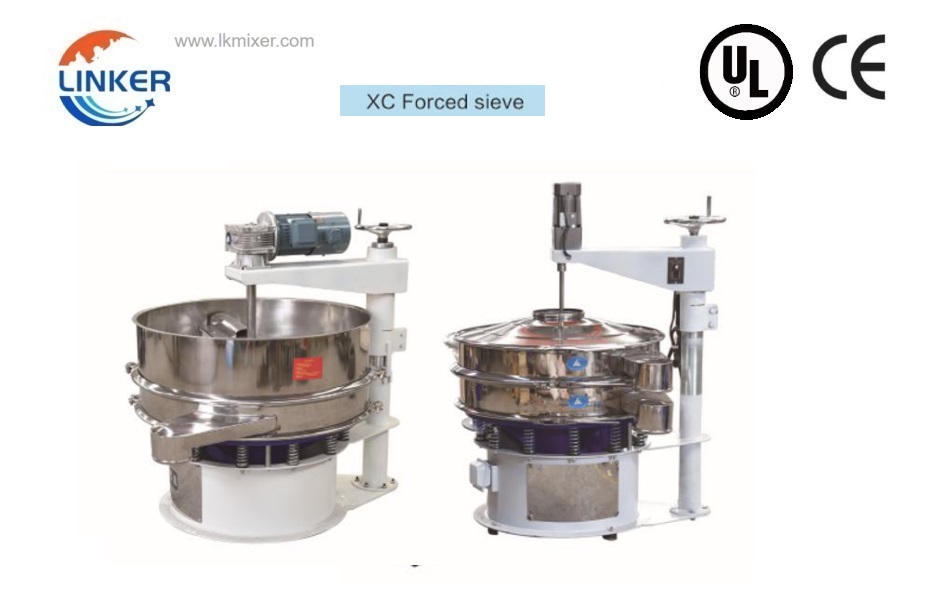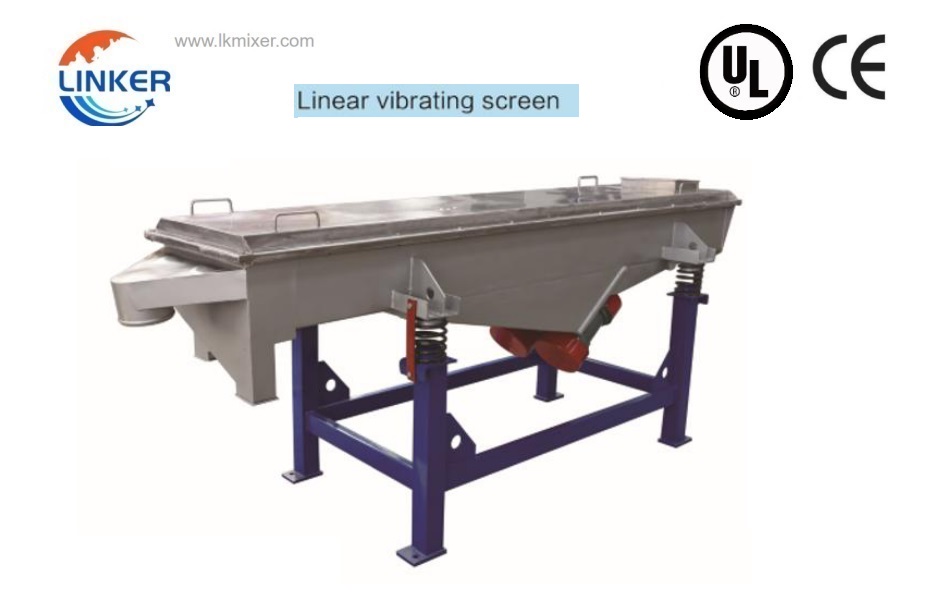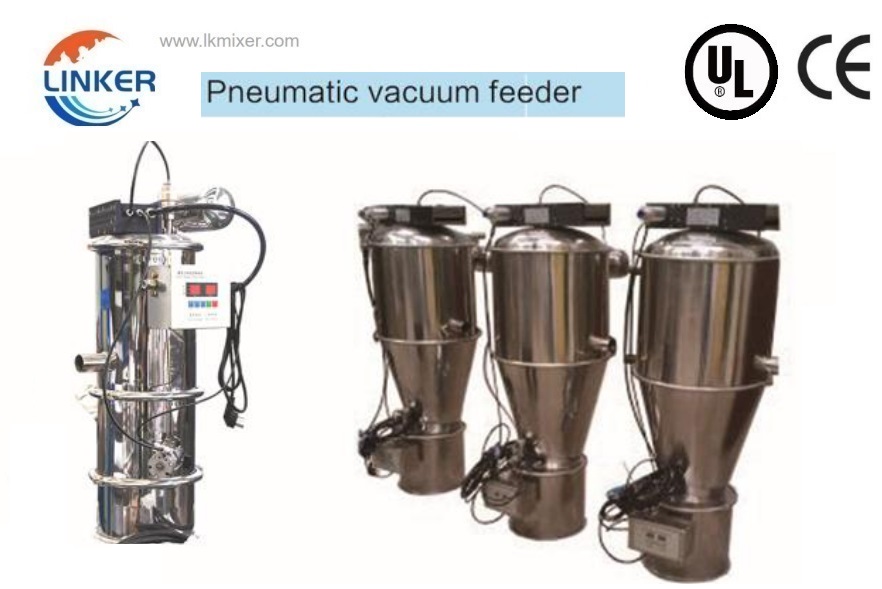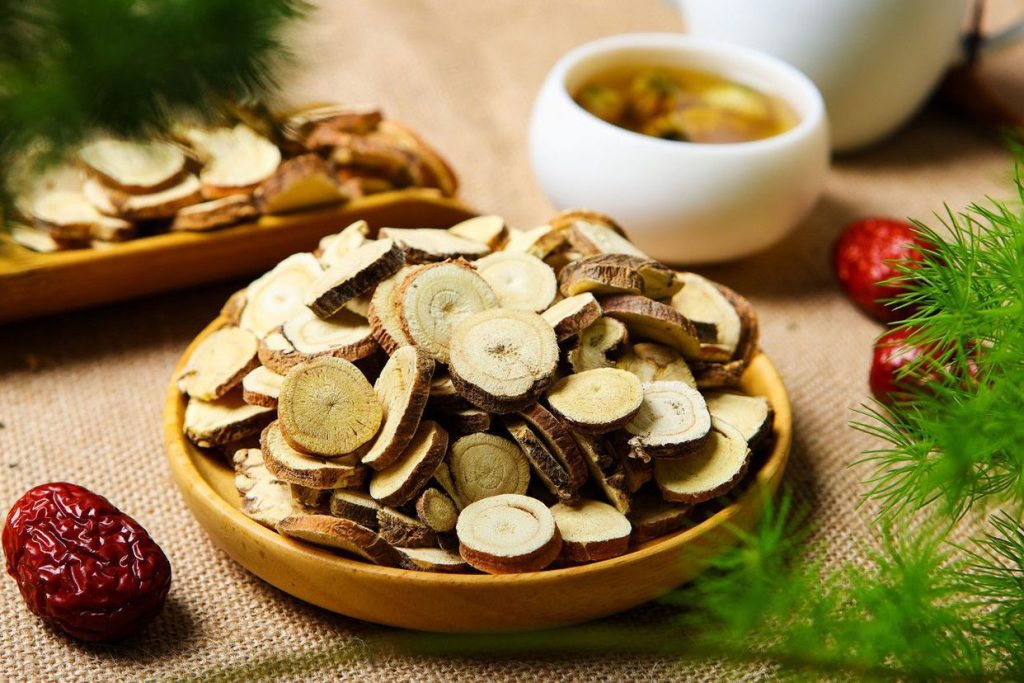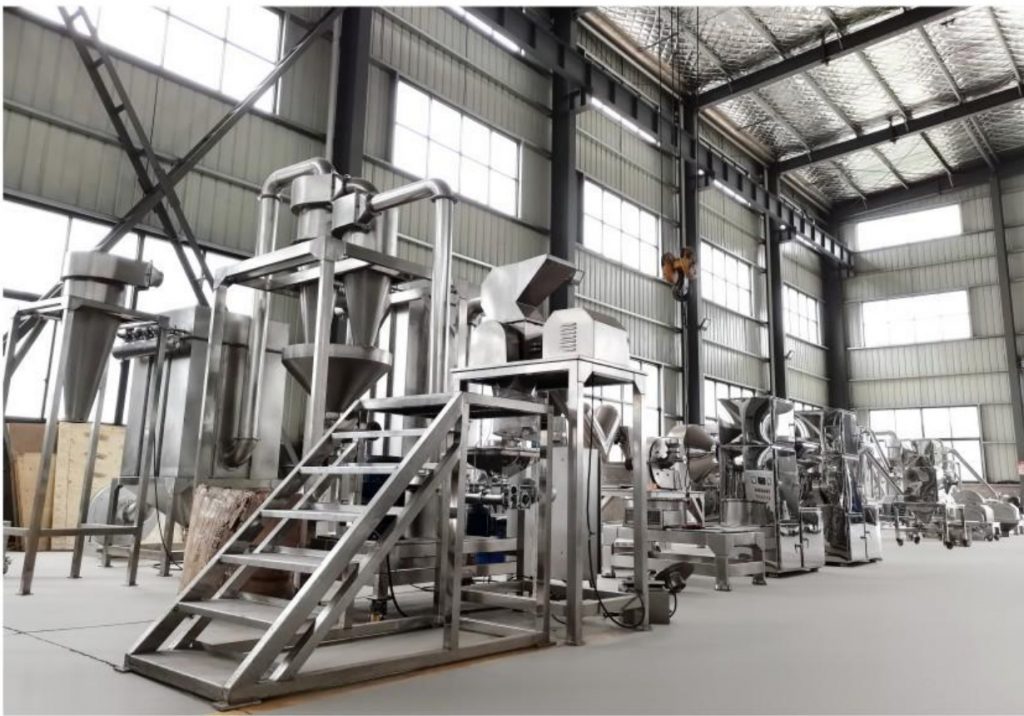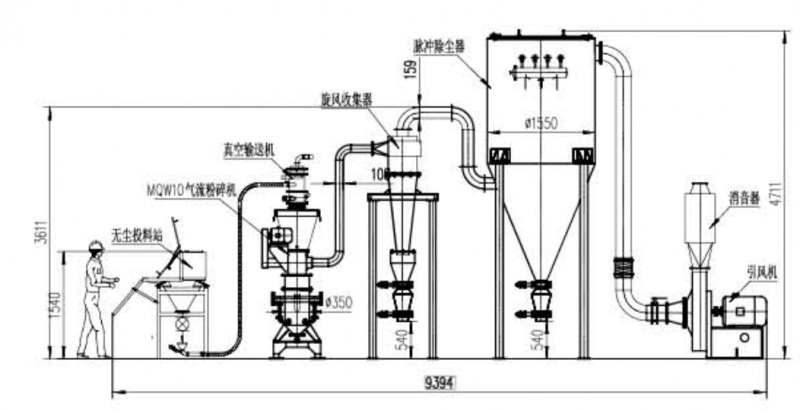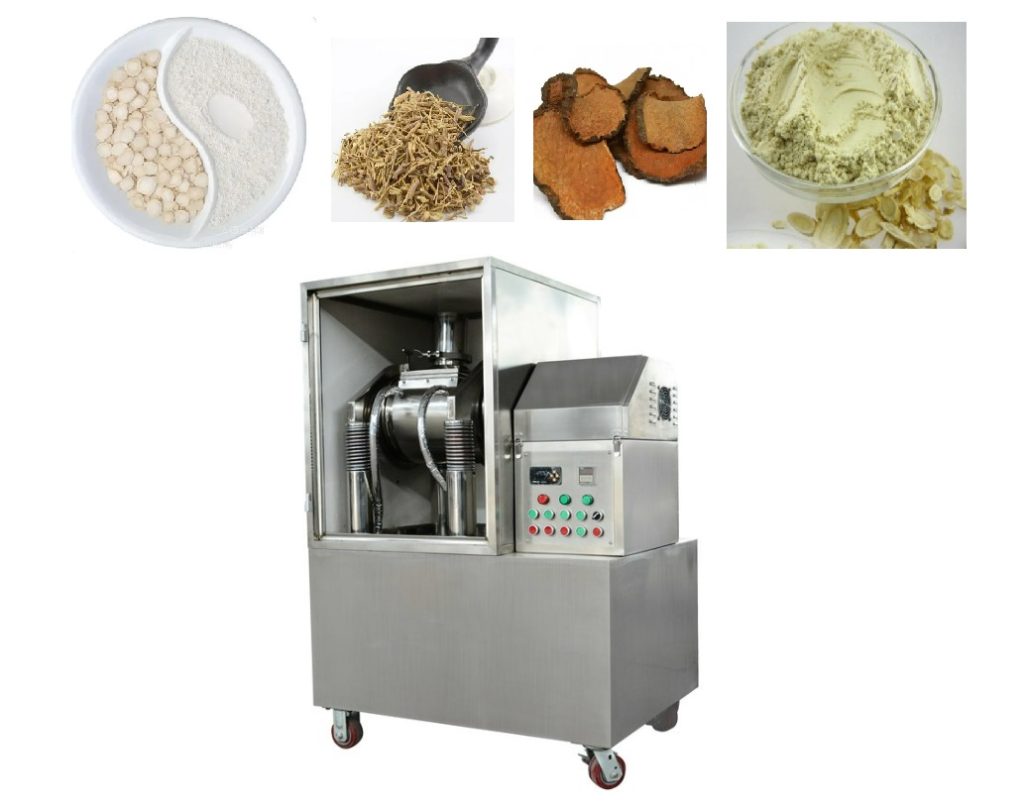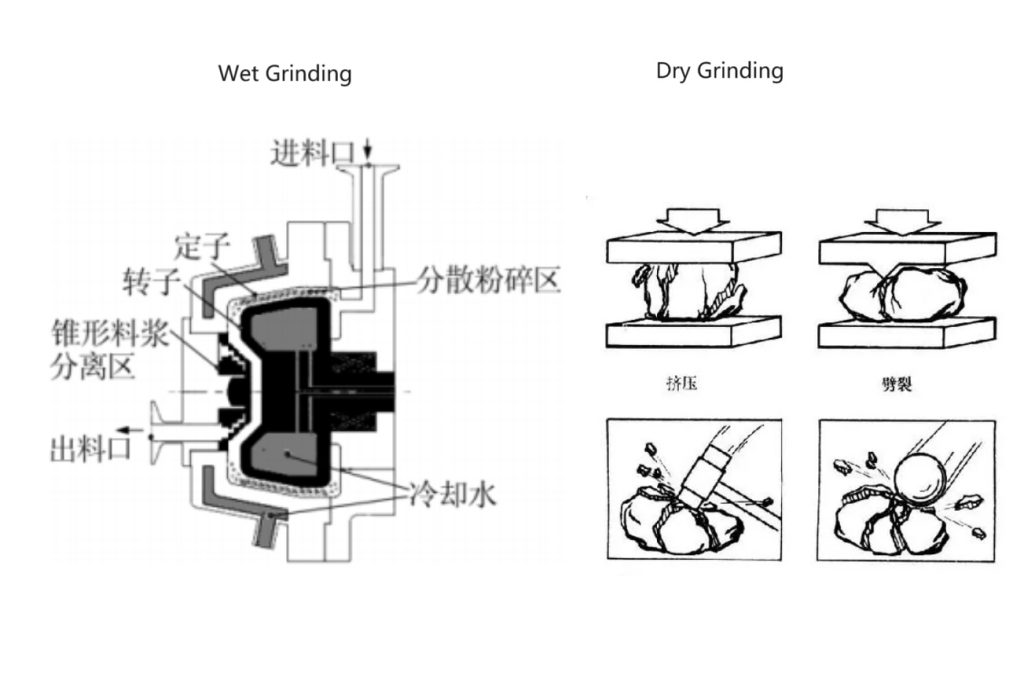Industrial Meat Grinder
An industrial meat grinder is a commercial heavy-duty appliance used in the food processing industry to grind large quantities of meat quickly and efficiently. It is commonly used in meat processing plants, supermarkets, and butcher shops. These grinders come in different sizes and capacities, ranging from small countertop models to large floor-standing units capable of processing thousands of pounds of meat per hour.
Industrial meat grinders typically feature powerful motors, heavy-duty cutting blades, and durable construction materials to withstand the demands of continuous use. They are designed to process different types of meat, including beef, pork, chicken, and turkey, and can be used to create a variety of ground meat products, such as ground beef, sausage, and meatballs.
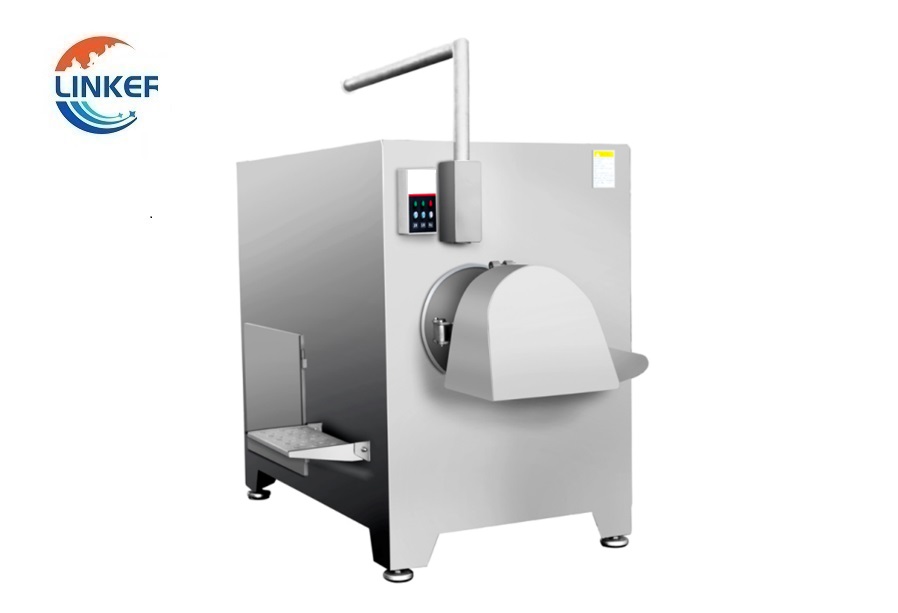
D300 Commercial Mean Grinder
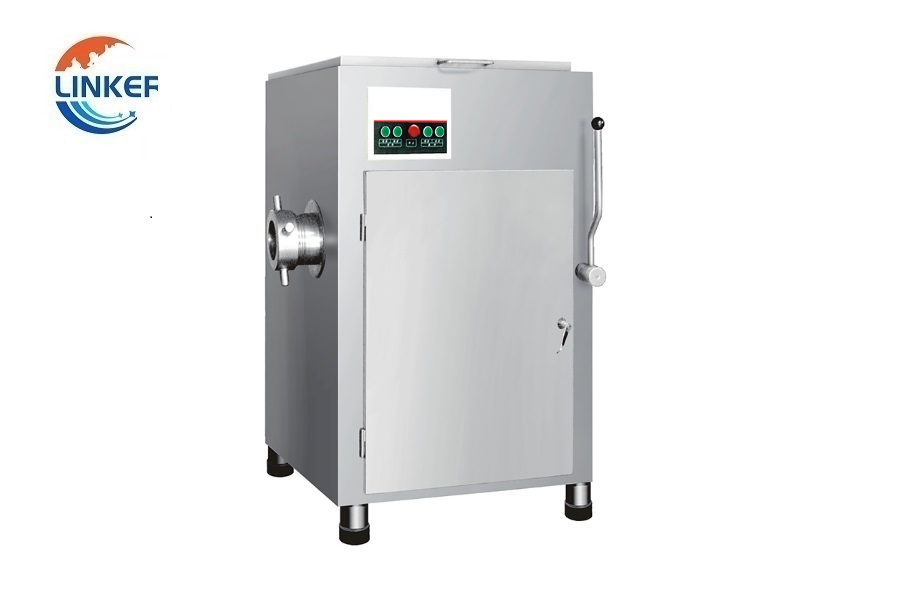
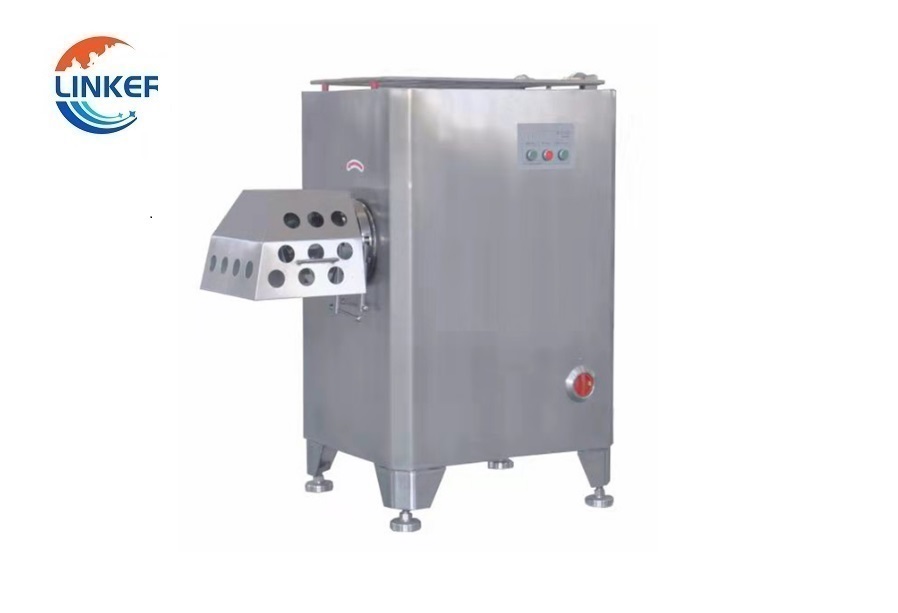
I. Introduction
Importance of industrial meat grinders in the food processing industry:
Industrial meat grinders are of great importance in the food processing industry for several reasons. Firstly, they enable the processing of large quantities of meat quickly and efficiently, which is crucial in meeting the demands of consumers and the market. Secondly, they help to reduce waste by ensuring that all parts of the meat are utilized in the production process. Thirdly, they provide consistent quality of ground meat products, which is important for maintaining the taste and texture of the meat products. Fourthly, industrial meat grinders are versatile and can be used to process different types of meat, which is essential for creating a variety of meat products that cater to different preferences and tastes. Overall, the use of industrial meat grinders has become an indispensable part of the food processing industry, helping to improve productivity, quality, and profitability.
II. Uses of Industrial Meat Grinders
A. Processing different types of meat:
There are several types of meat that can be processed using an industrial meat grinder. Some of the most common types include:
- Beef: Beef is a popular type of meat that is used in many meat products, such as hamburgers, sausages, and meatballs.
- Pork: Pork is another popular type of meat that is used in many meat products, such as bacon, ham, and sausages.
- Chicken: Chicken is a lean type of meat that is used in many meat products, such as chicken nuggets, patties, and sausages.
- Turkey: Turkey is a lean type of meat that is often used as a healthier alternative to beef or pork in meat products.
- Lamb: Lamb is a tender and flavorful type of meat that is used in many meat products, such as kebabs and gyro sandwiches.
- Game meats: Game meats such as venison, elk, and bison are also sometimes processed using industrial meat grinders.
Overall, the type of meat used will depend on the specific meat product being produced and the preferences of the consumers.
B. Creating a variety of ground meat products:
- Ground beef: Made from beef, this is one of the most common types of ground meat. It can be used in a variety of dishes, such as burgers, meatloaf, tacos, and spaghetti sauce.
- Ground pork: Made from pork, this type of ground meat is often used in sausages, meatballs, and dumplings.
- Ground turkey: Made from turkey, this type of ground meat is a popular alternative to ground beef because it is lower in fat and calories. It can be used in many of the same dishes as ground beef.
- Ground chicken: Made from chicken, this type of ground meat is also a lower-fat alternative to ground beef. It can be used in dishes such as meatballs, burgers, and stir-fries.
- Ground lamb: Made from lamb, this type of ground meat is used in many Middle Eastern and Mediterranean dishes, such as kofta and moussaka.
- Ground bison: Made from bison (also known as buffalo), this type of ground meat is leaner than beef and has a slightly sweeter flavor. It can be used in many of the same dishes as ground beef.
- Ground veal: Made from young cows, this type of ground meat is often used in Italian dishes such as meatballs and Bolognese sauce.
- Ground venison: Made from deer, this type of ground meat is lean and has a slightly gamey flavor. It can be used in dishes such as chili and meatloaf.
- Ground ostrich: Made from ostrich, this type of ground meat is low in fat and calories and has a slightly sweet flavor. It can be used in many of the same dishes as ground beef.
C. Reducing waste and increasing efficiency
Meat grinders can certainly help reduce waste and increase efficiency in a variety of ways:
- Using meat scraps: When you grind your own meat, you can use meat scraps that might otherwise be discarded, reducing waste.
- Controlling the grind: With a meat grinder, you can control the coarseness or fineness of the grind, which means you can make the most of the meat you have by choosing the best grind for your recipe.
- Freshness: Grinding meat yourself ensures that it is fresh and has not been sitting in a package for an unknown amount of time, which can lead to spoilage and waste.
- Cost savings: Purchasing larger cuts of meat and grinding them yourself can be more cost-effective than buying pre-ground meat, especially if you have access to discounted meat or want to take advantage of bulk buying options.
- Consistency: Grinding your own meat ensures a consistent quality and texture, which can improve the overall efficiency of your cooking process by reducing the need for adjustments during the cooking process.
Overall, using a meat grinder can help reduce waste, save money, and improve the quality of your meat-based dishes.
III. Advantages of Industrial Meat Grinders
Industrial meat grinders are designed for high-volume processing of meat products, and they offer several advantages over smaller, consumer-grade models. Here are some of the advantages of industrial meat grinders:
- High processing capacity: Industrial meat grinders are designed to handle large quantities of meat quickly and efficiently, making them ideal for use in commercial settings such as butcher shops, meat processing plants, and large restaurants.
- Durable construction: Industrial meat grinders are typically made from heavy-duty materials such as stainless steel, which makes them more durable and able to withstand frequent use over time.
- Increased efficiency: With an industrial meat grinder, meat can be processed more quickly and with less effort, which can help to increase overall efficiency in meat processing operations.
- Consistent quality: Industrial meat grinders are capable of producing consistent, high-quality ground meat products, which can help to improve the overall quality of meat-based dishes and reduce waste.
- Versatility: Many industrial meat grinders are designed to handle a wide range of meats, from beef and pork to chicken and fish, which can help to increase their versatility and make them a more valuable tool in meat processing operations.
- Safety features: Industrial meat grinders often come equipped with safety features such as guards and emergency stop switches, which can help to prevent accidents and injuries in the workplace.
Overall, industrial meat grinders are a valuable tool in meat processing operations, offering high processing capacity, durability, efficiency, consistent quality, versatility, and safety features.
IV. Challenges of Industrial Meat Grinders
While industrial meat grinders offer many advantages, they also present a number of challenges. Here are some of the challenges that may be associated with industrial meat grinders:
- High cost: Industrial meat grinders can be expensive, particularly for businesses that require large-capacity models. This can make it difficult for smaller businesses to invest in this equipment.
- Maintenance: Like any piece of machinery, industrial meat grinders require regular maintenance to ensure they continue to function properly. This can be time-consuming and costly.
- Sanitation: Industrial meat grinders must be thoroughly cleaned and sanitized after each use to prevent contamination and foodborne illness. This can be a time-consuming process that requires specialized equipment and training.
- Safety: While industrial meat grinders come equipped with safety features, accidents can still occur if operators are not properly trained or fail to follow safety protocols. This can lead to serious injuries or even fatalities.
- Noise and vibration: Industrial meat grinders can be loud and generate a lot of vibration, which can make them uncomfortable to operate for long periods of time. This can also create an unpleasant working environment.
- Power requirements: Industrial meat grinders require a significant amount of power to operate, which can be a challenge for businesses that are not equipped with the necessary electrical infrastructure.
Overall, while industrial meat grinders offer many benefits, they can also present challenges in terms of cost, maintenance, sanitation, safety, noise and vibration, and power requirements.
There are 3 ways of cooling down the grinder: water cooling system; air cooling system and liquid nitrogen freezing system. You can choose the right one if the grinder gets too hot. When machines goes too hot, the metal can expand, causing the grinding wheel to get stuck.
Feature:
Industrial meat grinders are designed to process large volumes of meat quickly and efficiently. Here are some of the features that are common to industrial meat grinders:
- Heavy-duty construction: Industrial meat grinders are typically made from high-quality materials such as stainless steel, which makes them durable and able to withstand frequent use.
- Large capacity: Industrial meat grinders are designed to handle large quantities of meat, which makes them ideal for use in commercial settings such as meat processing plants, butcher shops, and large restaurants.
- Powerful motor: Industrial meat grinders are equipped with powerful motors that can handle tough cuts of meat, bone, and cartilage. This allows them to process meat quickly and efficiently.
- Multiple grinding plates: Industrial meat grinders typically come with multiple grinding plates of different sizes, which allows operators to choose the appropriate plate for the desired grind size.
- Safety features: Industrial meat grinders come equipped with safety features such as guards and emergency stop switches, which help to prevent accidents and injuries.
- Easy to clean: Industrial meat grinders are designed to be easy to clean and sanitize, which is important in commercial settings where food safety is a top priority.
- Versatility: Many industrial meat grinders are capable of processing a wide range of meats, from beef and pork to chicken and fish. This makes them a versatile tool in meat processing operations.
Overall, industrial meat grinders are designed to be durable, powerful, and versatile, with multiple grinding plates and safety features to ensure efficient and safe operation.
| Business Type: | Manufacturer/Factory | Main Products: | Mill, grinder, granulator, mixer, Crushing Equipment |
| Number of Employees: | 100 | Year of Establishment: | 2014.05 |
| Production Capacity | 5000Set/Year | After-sales Service: | Technical Support; on-line teach lessons |
| R&D Capacity: | ODM, OEM | Annual Output Value: | US$5 Million – US$10 Million |
| No. of R&D Staff: | 5 | No. of Production Lines: | 6 |
LK Mixer is a professional manufacturer for grinder, mixer and pulverizer. These machines are widely used in pharmaceutical, cosmetic, health care products and chemical industries. Our main product including granulating machine, grinder, mixer, dryer, etc. All mechanical products in accordance with the China GMP design requirements. And also we have other certifications such as CE, UL for motors.
Business Philosophy
“Quality is the main policy of sales” and “integrity is the principle of success” are the business philosophy of our people. We carry out one-year warranty, lifelong maintenance service, with technical consultation, with material test machine and other services, and long-term supply of equipment. Welcome new and old customers to negotiate cooperation!
Certifications:
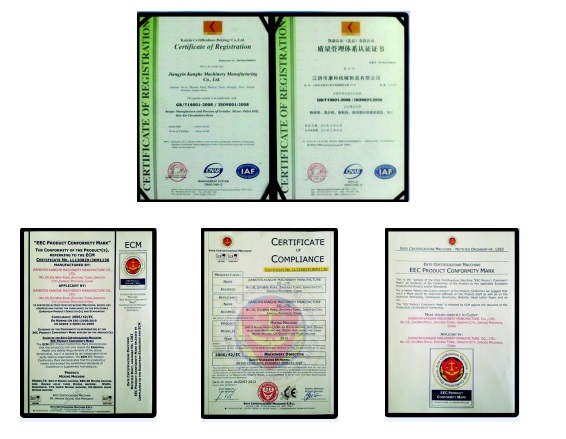
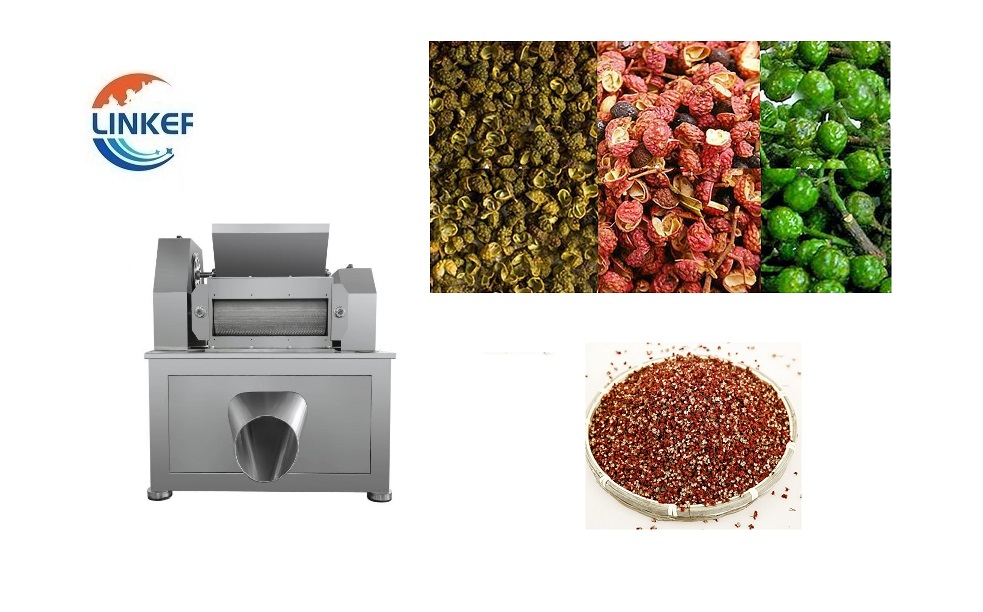
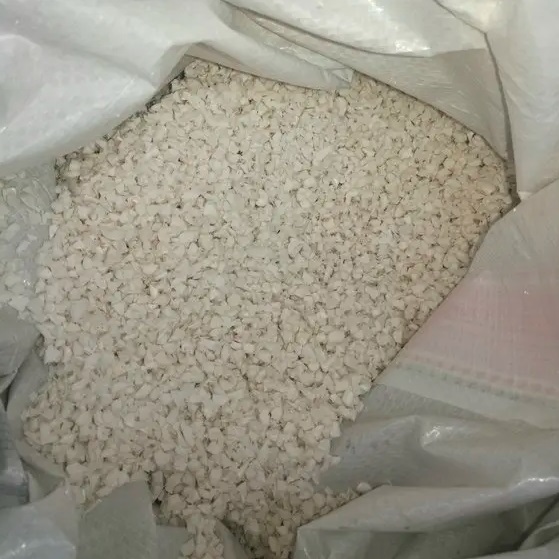
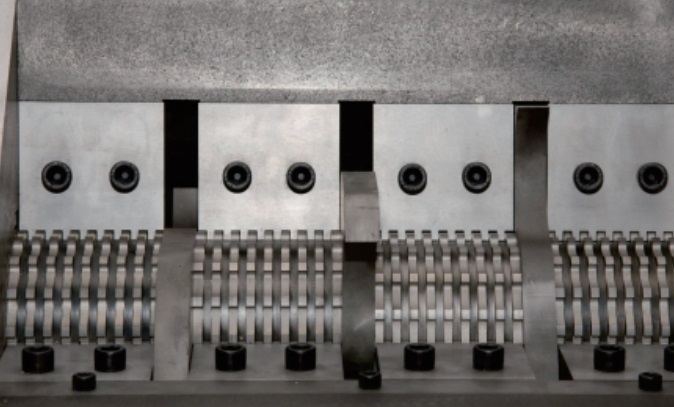
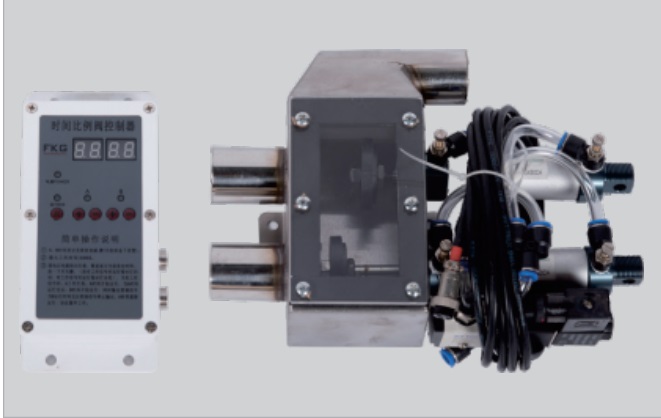
Electric Cabinet with UL Certification

Cyclone Processor and Motors:
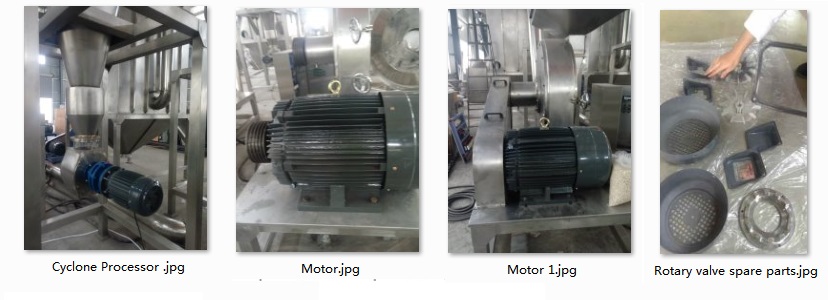
Spare Parts:
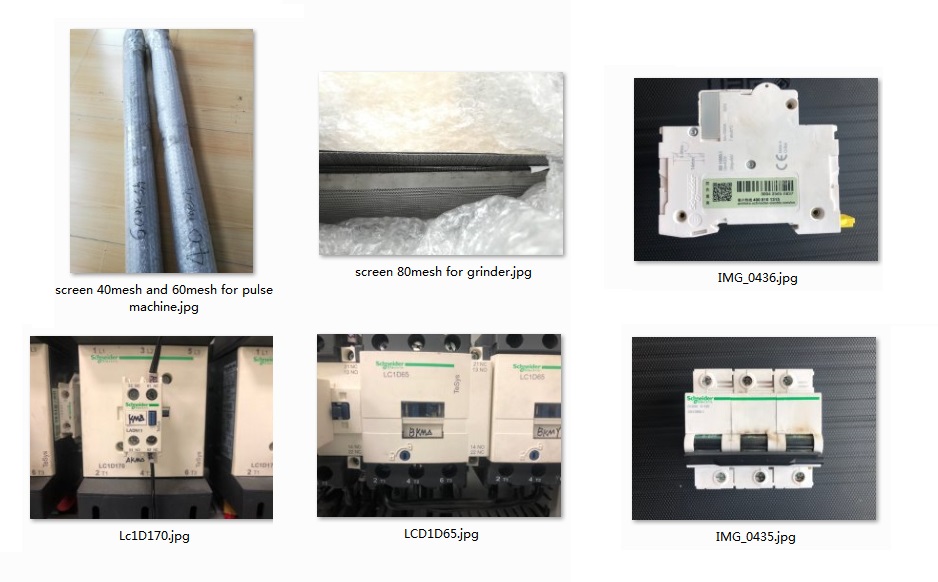
Small Machine Packing:
Small machine packed with export fumigation-free wooden cases, goes with bulk shipment or in container.
When packing small machines for sea shipment, it is important to take measures to ensure that the machines are protected from damage during transit. Here are some general steps that a manufacturer may follow when packing small machines for sea shipment:
- Clean and dry the machine: Before packing, the machine should be thoroughly cleaned and dried to prevent any moisture or debris from causing damage during transit.
- Disassemble the machine: If possible, the machine should be disassembled into its component parts to reduce its overall size and make it easier to pack.
- Wrap the machine in protective material: The machine should be wrapped in a layer of protective material, such as bubble wrap or foam, to protect it from scratches and impact during transit.
- Place the machine in a sturdy box: The wrapped machine should then be placed in a sturdy box that is appropriate for the size and weight of the machine. The box should be made of durable material, such as corrugated cardboard or plywood, and should be able to withstand the rigors of sea transit.
- Add packing material: The box should be filled with packing material, such as packing peanuts or air pillows, to provide cushioning and prevent the machine from shifting during transit.
- Seal the box: The box should be securely sealed with high-quality packing tape to prevent it from opening during transit.
- Label the box: The box should be clearly labeled with the machine’s name, weight, and any other relevant information, as well as the destination address and contact information.
Overall, the goal is to pack the small machine in a way that will protect it from damage during transit and ensure that it arrives at its destination in good condition. It is important to follow proper packing procedures and use high-quality packing materials to minimize the risk of damage during sea shipment.
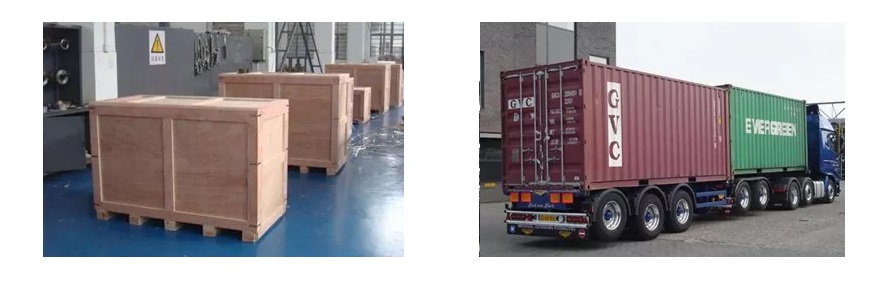
Large Machine Packing:
Packing a large machine for sea shipment can be a complex and challenging task. However, with careful planning and attention to detail, it is possible to pack a large machine for sea shipment in a way that will ensure that it arrives at its destination in good condition. Here are some general steps that a manufacturer may follow when packing up a large machine for sea shipment:
- Clean and prepare the machine: Before packing, the machine should be thoroughly cleaned and prepared. All fluids, such as oil or coolant, should be drained, and any loose or detachable parts should be removed.
- Disassemble the machine: If possible, the machine should be disassembled into its component parts to reduce its overall size and make it easier to pack. Each part should be carefully labeled and numbered to ensure that it can be easily reassembled at the destination.
- Protect delicate parts: Delicate or fragile parts should be wrapped in protective material, such as bubble wrap or foam, to protect them from damage during transit.
- Build a custom crate: A custom crate should be built around the machine to provide a secure and sturdy enclosure. The crate should be made of durable material, such as plywood, and should be designed to fit the machine snugly. The crate should also include braces or supports to prevent the machine from shifting during transit.
- Add cushioning material: The crate should be filled with cushioning material, such as packing peanuts or air pillows, to provide extra protection and prevent the machine from moving or shifting during transit.
- Securely fasten the machine: The machine should be securely fastened to the crate to prevent it from moving or shifting during transit. This may involve using straps, bolts, or other fasteners to hold the machine in place.
- Seal and label the crate: The crate should be securely sealed with high-quality packing tape, and should be clearly labeled with the machine’s name, weight, and any other relevant information. The destination address and contact information should also be clearly marked on the crate.
Overall, packing a large machine for sea shipment requires careful planning and attention to detail. It is important to use high-quality materials and follow proper packing procedures to ensure that the machine arrives at its destination in good condition. A professional packing and shipping company may be consulted to ensure that the machine is properly packed and prepared for sea shipment.
Customer Side Machine Groups Showcase Videos:
Dust Collector Shipment
Shipment – Packing Method
Two Large Industrial Grinder Ready to Ship
Domestic Shipment Show Case:
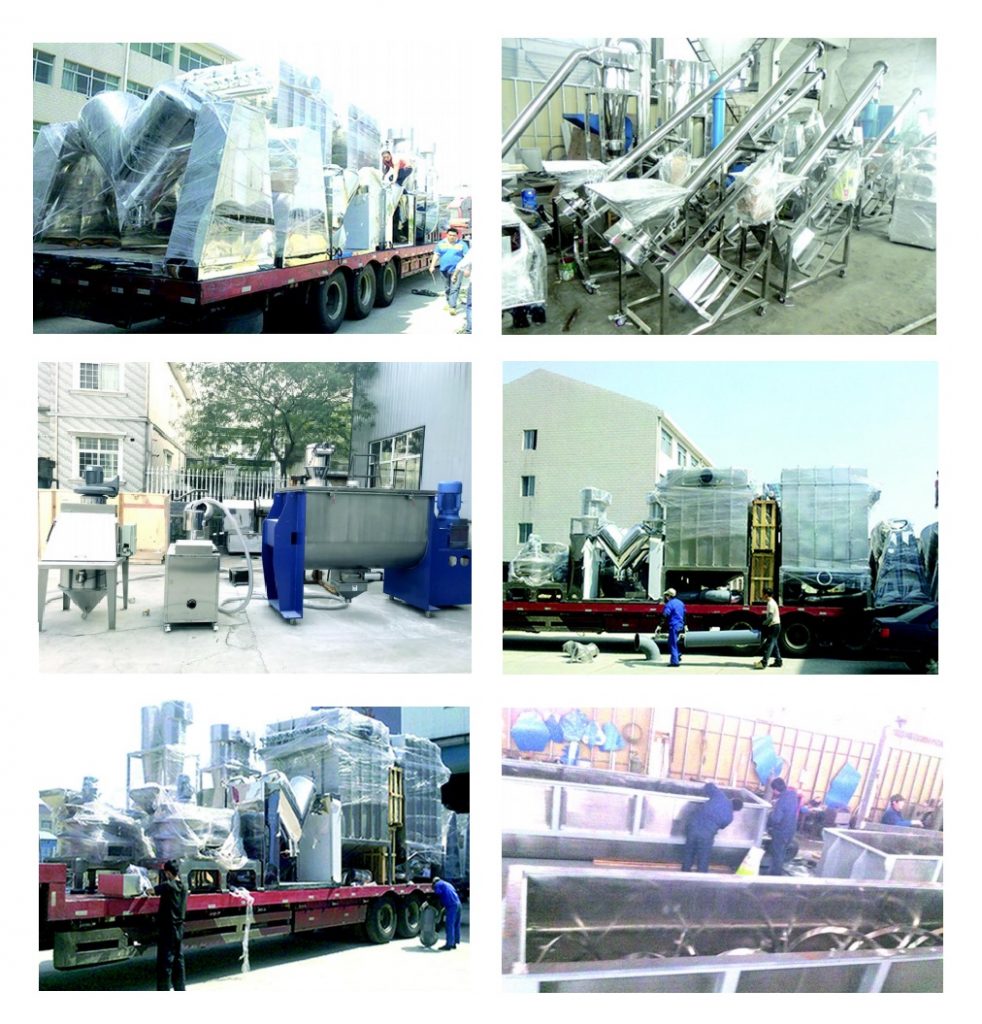
Operation Instruction
General Provisions
The operation instructions for a commercial grinder may vary depending on the specific model and manufacturer. However, here are some general guidelines that may apply to many high speed grinders:
- Safety precautions: Before operating the high speed grinder, it is important to review all safety precautions and warnings provided in the user manual. Safety precautions may include wearing appropriate personal protective equipment, such as eye protection and hearing protection, and avoiding loose clothing or jewelry that could become caught in the grinder.
- Preparation: The high speed grinder should be placed on a stable and level surface, and all necessary components should be assembled according to the manufacturer’s instructions. The grinder should also be connected to a power source that is appropriate for its voltage and wattage.
- Loading the grinder: The material to be ground should be loaded into the grinder according to the manufacturer’s instructions. Overloading the grinder may cause damage to the machine and result in poor grinding performance.
- Starting the grinder: The grinder should be started according to the manufacturer’s instructions. This may involve pressing a button, turning a dial, or flipping a switch. The user should ensure that their hands are clear of the grinder and that the material to be ground is positioned properly.
- Adjusting the speed and settings: The speed and other settings of the high speed grinder may be adjusted according to the material being ground and the desired outcome. The user should follow the manufacturer’s instructions for making adjustments to the grinder.
- Monitoring the grinding process: The user should monitor the grinding process to ensure that it is progressing smoothly and that the material is being ground to the desired size and consistency. Any issues or abnormalities should be addressed promptly to prevent damage to the machine.
- Shutting down the grinder: When the grinding process is complete, the grinder should be shut down according to the manufacturer’s instructions. The user should ensure that the machine is completely stopped and that all moving parts have come to a complete stop before attempting to clean or service the grinder.
Overall, the operation instructions for a commercial grinder may involve a number of steps and safety precautions. It is important to carefully review the manufacturer’s instructions and follow proper operating procedures to ensure safe and effective use of the machine.
Preparation Work
Before running a commercial grinder, there are several important preparation steps that should be taken to ensure safe and effective operation of the machine. Here are some general guidelines for preparing to run a high speed grinder:
- Read the user manual: The first step in preparing to run a high speed grinder is to carefully read the user manual provided by the manufacturer. The user manual will provide important information about the specific model of grinder being used, including its features, specifications, and safety precautions.
- Select the appropriate grinding wheel: The grinding wheel used in a high speed grinder should be selected based on the material being ground and the desired outcome. It is important to use the correct type of grinding wheel to prevent damage to the machine and ensure optimal grinding performance.
- Inspect the grinder: Before running the grinder, it is important to inspect it for any signs of damage or wear. The user should check for loose or missing components, cracks or other signs of damage to the machine’s housing or other parts, and any other issues that could affect the grinder’s operation.
- Install the grinding wheel: The grinding wheel should be installed according to the manufacturer’s instructions, making sure that it is securely fastened and aligned properly. The user should also check the wheel for any cracks or other signs of damage before installation.
- Secure the workpiece: The workpiece to be ground should be securely clamped or held in place before starting the grinder. This will help to ensure safe and effective operation and prevent the workpiece from becoming dislodged or damaged during grinding.
- Connect the power source: The high speed grinder should be connected to a power source that is appropriate for its voltage and wattage. It is important to use a properly grounded power source to ensure safe and reliable operation of the machine.
- Test run: Before beginning actual grinding operations, it may be useful to perform a test run to ensure that the grinder is functioning properly and that the grinding wheel is aligned and balanced properly. The user should follow the manufacturer’s instructions for performing a test run.
By following these preparation steps, users can ensure safe and effective operation of a high speed grinder and achieve optimal grinding results.
Treatment of inspection
Inspection of a commercial grinder is an important maintenance procedure that helps ensure safe and effective operation of the machine. Here are some general guidelines for inspecting a high speed grinder:
- Disconnect power source: Before performing any inspection or maintenance on a high speed grinder, the power source should be disconnected to prevent accidental startup.
- Check for wear and damage: The user should inspect the grinder for any signs of wear or damage, such as cracks in the housing, worn or damaged grinding wheels, or loose or missing parts. Any issues should be addressed promptly to prevent further damage to the machine.
- Check alignment and balance of grinding wheel: The grinding wheel should be inspected for proper alignment and balance, as these factors can affect the quality of the grinding operation. If the grinding wheel is not properly aligned or balanced, it should be adjusted or replaced as necessary.
- Check for proper lubrication: The high speed grinder should be inspected for proper lubrication, as inadequate lubrication can cause excessive wear and damage to the machine’s moving parts. The user should follow the manufacturer’s instructions for lubrication, and add lubricant as necessary.
- Inspect electrical components: The electrical components of the high speed grinder, including the wiring, switches, and control panel, should be inspected for any signs of wear, damage, or loose connections. Any issues should be addressed promptly to prevent electrical problems.
- Test run: After completing the inspection, it may be useful to perform a test run of the high speed grinder to ensure that it is functioning properly and that any issues have been addressed.
By following these inspection guidelines, users can help ensure safe and effective operation of a high speed grinder and minimize the risk of damage or injury during grinding operations.
Operation Attention
Running a commercial grinder can be a dangerous operation if proper precautions are not taken. Here are some general guidelines for safe operation of a high speed grinder:
- Personal protective equipment: The user should wear appropriate personal protective equipment, such as safety glasses, hearing protection, and gloves, to prevent injury from flying debris, noise, and contact with the grinding wheel.
- Secure workpiece: The workpiece being ground should be securely clamped or held in place to prevent it from becoming dislodged during grinding.
- Use proper grinding wheel: The user should select the appropriate grinding wheel for the material being ground and ensure that it is installed correctly and securely. The grinding wheel should be inspected for cracks or other damage before use.
- Adjust grinding wheel speed: The speed of the grinding wheel should be adjusted according to the manufacturer’s instructions to ensure optimal grinding performance and prevent damage to the machine or workpiece.
- Avoid excessive pressure: The user should avoid applying excessive pressure to the grinding wheel, as this can cause the wheel to overheat and wear out more quickly.
- Avoid overheating: The high speed grinder should not be operated continuously for extended periods of time, as this can cause overheating and damage to the machine.
- Monitor grinding operation: The user should closely monitor the grinding operation to ensure that the workpiece is being ground properly and that the grinding wheel is functioning correctly.
- Disconnect power source: After completing grinding operations, the power source should be disconnected to prevent accidental startup.
By following these guidelines, users can operate a high speed grinder safely and effectively, and achieve optimal grinding results. It is important to follow the manufacturer’s instructions and all applicable safety regulations when operating any type of machinery.
Installation Layout:
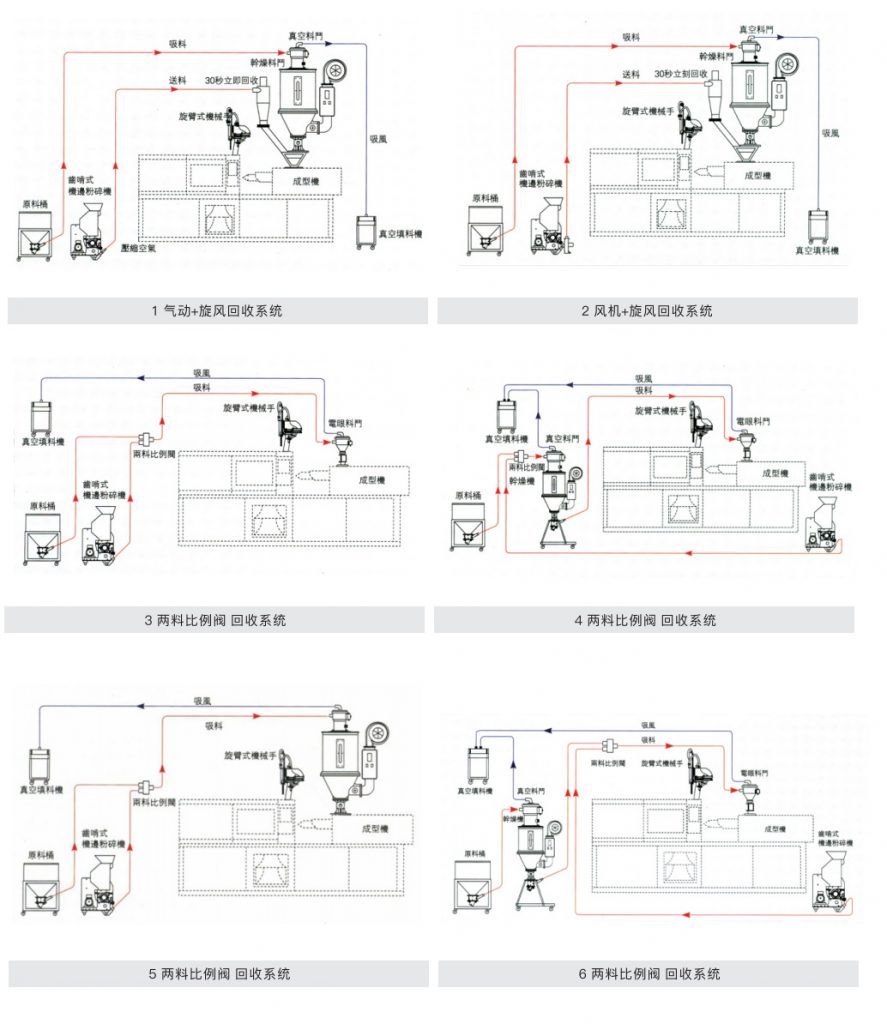
Applications of Industrial Mushroom Grinder
Industrial meat grinders have a wide range of applications in the meat processing industry. Here are some of the common applications of industrial meat grinders:
- Meat processing plants: Industrial meat grinders are often used in meat processing plants to grind large quantities of meat, such as beef, pork, or chicken, into ground meat products that can be used in a variety of applications, including sausage, burger patties, meatballs, and more.
- Butcher shops: Butcher shops use industrial meat grinders to grind fresh cuts of meat into ground meat products, which are then sold to customers or used to create value-added meat products such as sausage or ground beef.
- Large restaurants: Large restaurants and catering operations often use industrial meat grinders to process large quantities of meat for use in their menu items.
- Foodservice distributors: Foodservice distributors use industrial meat grinders to process large quantities of meat into ground meat products, which are then sold to other businesses such as restaurants, hotels, and schools.
- Pet food manufacturers: Industrial meat grinders are also used in pet food manufacturing to process meat into ground meat products that are used in pet food formulations.
Overall, industrial meat grinders are used in a variety of applications within the meat processing industry, including meat processing plants, butcher shops, large restaurants, foodservice distributors, and pet food manufacturing.
About LKMixer
LKMixer is a professional manufacturer for fertilizer production line, grinder, mixer and granulator, shredder. These machines are widely used in food, pharmaceutical, cosmetic, health care products and chemical industries. The Food materials like Peanut, mushroom, seeds, potato, bean, tobacco, salt, cannabis, tea, Sugar, corn, Coffee, rice, pepper, grain as so on. Grinders have many types such as Pulse Dust Grinder which suitable for zero pollution environment, Turbine Mill which is suitable for coffee bean, 12-120mesh all can meet, Ultrafine Grinding Mill covers 80-200mesh, and also Winnowing Dust Grinder or other grinding machines like SF Hammer. Welcome to contact us for details. Contact us for more information. Proposal, catalog, quotation. Mobile/WhatsApp: +86 18019763531 Tel: +86 21 66037855 Email: sales@lkmixer.com
Contact Us
SG Double Shaft Grinder for Industrial Seeds Grinder Youtube Video
FAQ(Click and See More)
Can an industrial meat grinder grind bones?
Yes, some industrial meat grinders are capable of grinding bones. However, it’s important to note that not all industrial meat grinders are designed to handle bones, and attempting to grind bones with a grinder that is not designed for this purpose can cause damage to the grinder or result in a poor quality grind.
Industrial meat grinders that are designed to grind bones typically feature a powerful motor, heavy-duty construction, and specialized grinding plates and blades that are capable of processing bone and cartilage. These grinders are commonly used in pet food manufacturing, where bone is often included in pet food formulations.
It’s important to follow the manufacturer’s instructions when using an industrial meat grinder to grind bones, and to only use grinders that are specifically designed for this purpose. Attempting to grind bones with a grinder that is not designed for this purpose can be dangerous and can result in equipment damage or failure.
What is a large machine used to grind meat called?
A large machine used to grind meat is commonly called an industrial meat grinder or commercial meat grinder. These machines are specifically designed for use in commercial settings such as meat processing plants, butcher shops, and large restaurants, where they are used to process large quantities of meat quickly and efficiently. Industrial meat grinders typically feature a heavy-duty construction, a powerful motor, multiple grinding plates of different sizes, and safety features to ensure efficient and safe operation.
What is an industrial mincer?
An industrial mincer is another term for an industrial meat grinder or commercial meat grinder. It is a large machine designed for use in commercial settings such as meat processing plants, butcher shops, and large restaurants to process large quantities of meat quickly and efficiently. An industrial mincer or meat grinder can grind different types of meat, including beef, pork, chicken, and fish, into various sizes and shapes, such as ground meat, sausages, and burger patties. Industrial mincers often feature a heavy-duty construction, powerful motors, and multiple grinding plates of different sizes to allow operators to choose the appropriate plate for the desired grind size. Industrial mincers are also equipped with safety features such as guards and emergency stop switches to ensure efficient and safe operation.
How do you use an industrial meat grinder?
Using an industrial meat grinder is a straightforward process, but it’s important to follow the manufacturer’s instructions carefully to ensure efficient and safe operation. Here are the general steps for using an industrial meat grinder:
Preparation: Before using the meat grinder, make sure that all components are clean and sanitized. Ensure that the grinder is assembled properly, with the appropriate grinding plate and blade in place.
Meat Preparation: Cut the meat into smaller pieces that will fit easily into the grinder chute. For some grinders, it may be necessary to remove any bones or gristle before grinding the meat.
Set Up: Set up the grinder according to the manufacturer’s instructions, including adjusting the grinding plate to the desired size for the meat you will be grinding.
Grinding: Turn on the grinder and feed the meat into the grinder chute. Use the pusher to help feed the meat into the grinder if necessary. Keep your hands and fingers away from the grinder head and the auger to prevent injury.
Cleaning: Once you have finished grinding the meat, turn off the grinder and disassemble it. Clean all the components of the grinder thoroughly, including the grinding plates, blade, and housing.
It’s important to follow food safety guidelines when using an industrial meat grinder. This includes washing your hands frequently and keeping the meat and equipment at the appropriate temperature to prevent the growth of harmful bacteria.

